Pylon Diamond 30 mkII Stereo HIFI Floorstanding Tower Speakers – Pure Audiophile Euphoria
Pylon Diamond 30 mkII is a $ 3000 USD pair of high-end Speakers designed in Poland by Pylon Audio, and they come to redefine what we can expect from a relatively affordable price point for speakers. As a floorstanding tower speaker, it is the modernised version of the flagship, largest floorstanding speaker in the Diamond series produced by Pylon. Given the price for a pair, we will compare the Diamond 30 MKii with Amphion Argon3s (3000 USD), KLH Model Five (2499 USD), and Aurender S5W (3000 USD). Given the nature of the speakers and the price point we will also explore pairings with a multitude of amplifiers, including Keces S300+ (3499 USD), Cyrus One Cast (2000 USD), and SMSL AO300 (289 USD).

Introduction
Pylon Audio is one of the most popular Speaker brands in Europe, they are loved by both fans, and collaborators, having a strong influence on the HiFi scene all across the world. The Diamond 30 MKII is the largest and the flagship of the Diamond line, with exceptionally large woofers and an angled design to get the sound to your ears in the most cohesive and coherent manner possible. As an Amazon Influencer, I earn from qualifying purchases, and using the purchase links in my reviews helps me maintain this website and Youtube Channel. I thank Pylon Audio for providing the sample for this review, in exchange for my honest opinion.
PROs – Really easy to place, strong vertical dispersion, strong lateral dispersion, not exaggeratedly hard to drive, outstanding resolution and clarity, brilliant, but smooth treble, deep and punchy bass, very dynamic and musical sound. The tuning is perfect for all music styles, no genre is left behind, and Diamond 30 MKII is impressive with Rock, Metal, EDM, Jazz, Classical, Movie and game soundtracks, basically everything sounds right as it should, does not require an acoustically treated room to be great, comes with isolation spikes applied, magnetic protection grilles, price performance ratio is insane, they will simplify your listening setup as you’ll ditch the subwoofer and super tweeters thanks to how they sound by default.
Cons – Heavy and hard to handle (like most tower speakers), Seeing the natural wood finish at high-end Munich 2024 made me wish I went for it instead of the full black colour I got, It Needs a good amp and good DAC to really shine.
Product Link
Official Link – https://www.pylonaudio.com/diamond-30-mkII-pylon-audio
Amazon – https://amzn.to/3XoQsmK
Build Quality / Aesthetics
Diamond30 MKII is a large, heavy speaker which is floorstanding, and which towers tall at 1090 mm, having 525 mm of depth and 196 mm of Width. This makes it a long, thin but tall speaker. Compared to KLH Model five, for example, it is much thinner, but taller and deeper, while the finish seems to be of a higher quality. The finish is also much easier to handle and maintain compared to the likes of NHT C3, which having that piano black coating will scratch easily, while I can confirm that I had the Diamond 30 MKii placed on their side, and upside down while unboxing, and they are still in pristine condition, with not a single visible scratch.
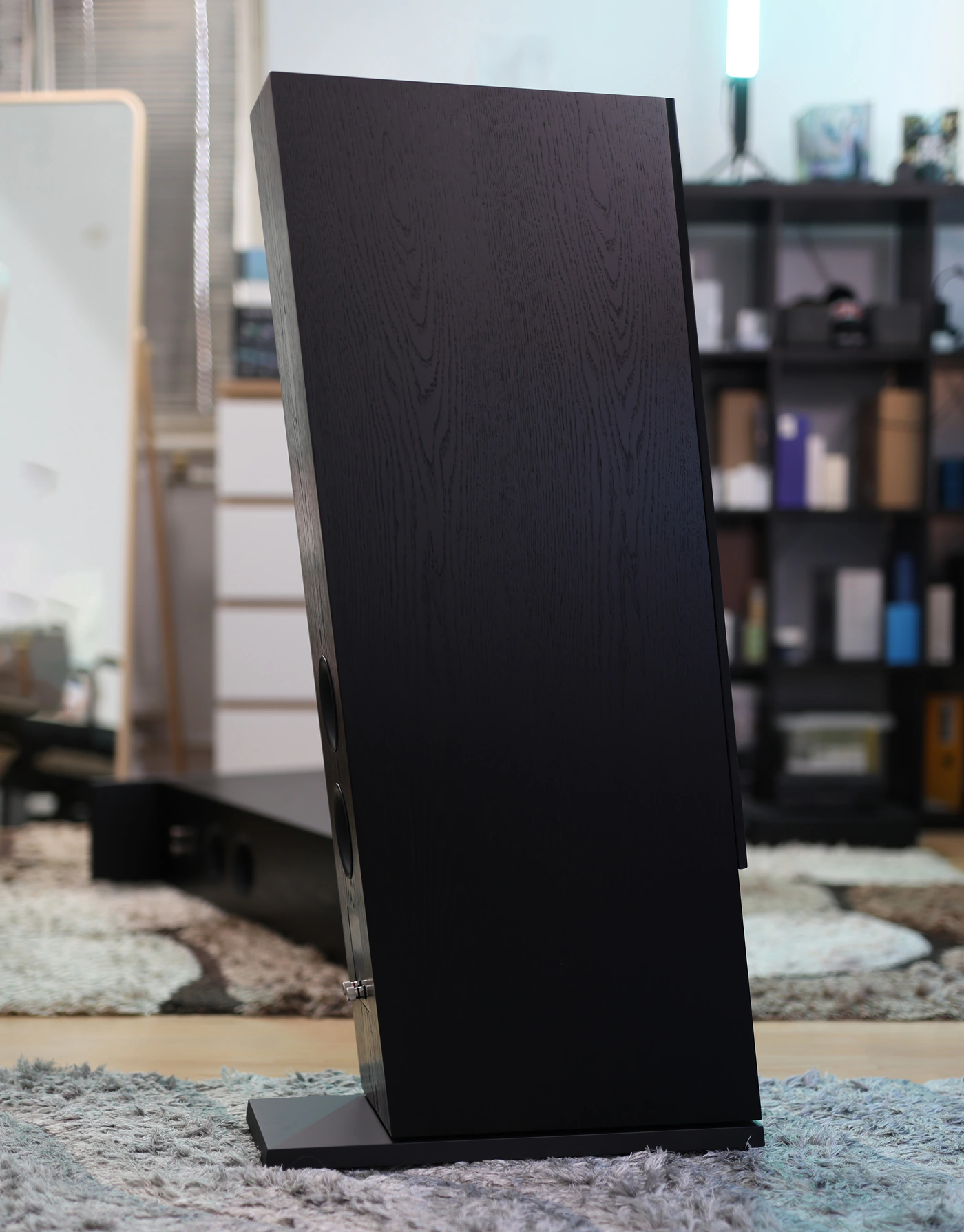
The bass is achieved by using two large woofers from Seas, the Norwegian brand, and those are latest gen drivers, with massive magnetic structures, and large 1.5″ aluminium-copper voice coils, ensuring more of a piston-like operation. The part used for the speaker is 2xPylon Audio PSW 18.8.CA/X (2xSeas CA18RNX_CUSTOM). Pylon modifies most of the drivers used in their speakers and this is the case with the midrange driver, which is a Seas design as well, but modified especially for Diamond 30 mkii. The dust cap at the centre has been replaced with a phase plug, in the shape of a bullet. This has the advantage of removing the resonances in the area, reducing the coloration in the upper midrange. The construction is made using Spider ring tech, developed for better control of production. The part used is Pylon Audio PSW 15.8.CA/P (1xSeas CA15RLY/P_CUSTOM).
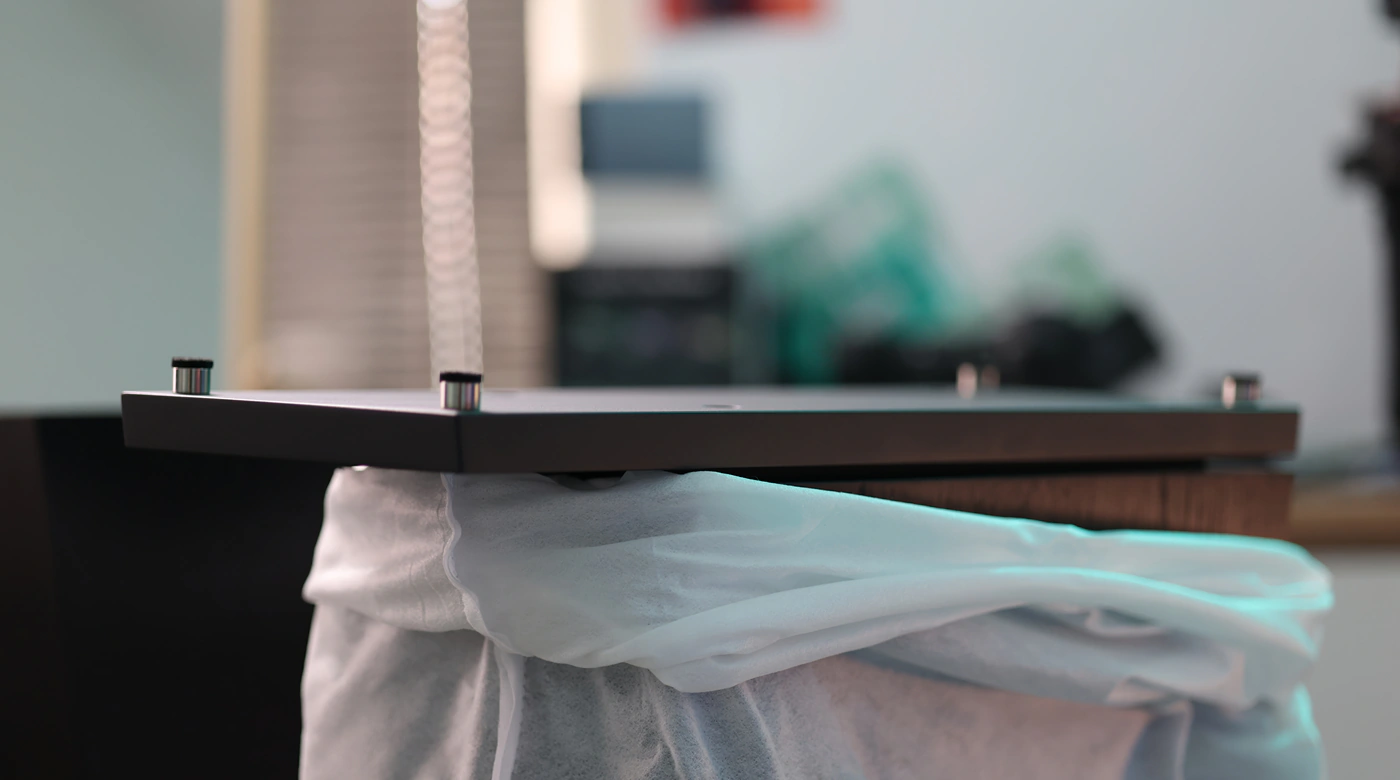
The twitter driver is a Danish Scan-Speak driver with a neodymium magnetic system, a dual resonance chamber, and a modified frontal part, black in colour, to better compliment the design of the whole speaker. The company improved the impulse response of the driver, and the driver is more efficient, having lower non-linear distortions, and a lower THD. The part used is Pylon Audio PST 19.TN (Scan Speak D2010/852100).
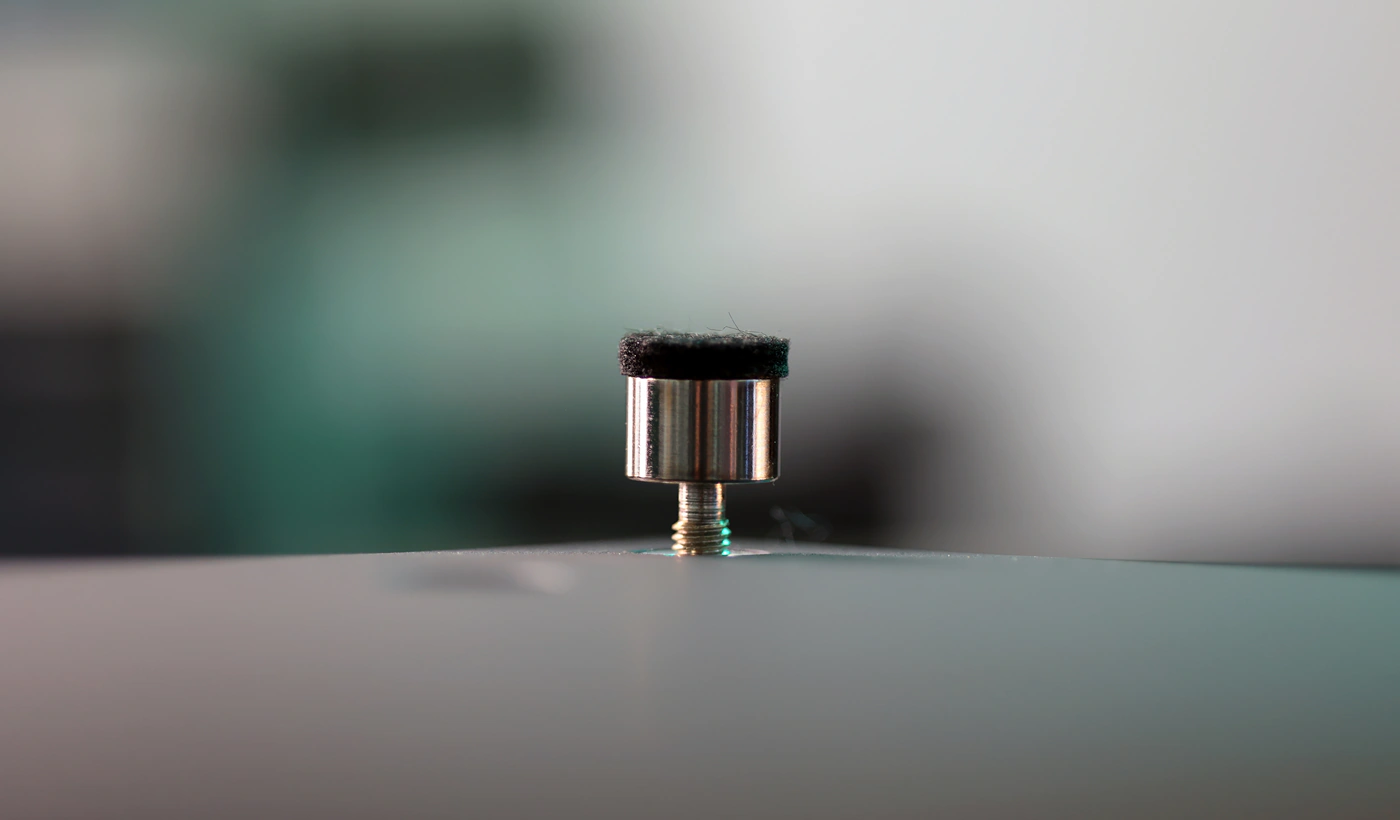
Compared to the previous version, Diamond 30 mkii has a higher tilt, which improves the time integration of individual frequency bands, and makes the sound from each driver arrive to your ear at the same time. Inside the speakers we can find sheep wool, and also a new sound absorbing material, for a lower internal THD of the enclosure. The speakers are designed for rooms ranging between 28 and 48 square meters, which would make them ideal for most listening rooms.
Usage / Placement / Power Needs
In the subjective part of my tests, I have gotten to know the Diamond 30 mkii quite well, placing them in both a sonically treated room, and in an untreated room as well. I moved them to both a smaller chamber and a larger one, to get to know them better, and have used them in typical stereo hifi settings, sitting on a sofa, chair, and using them as computer speakers. The speaker connects are of the highest quality, and there are two bass ports on the back, which allow the bass to fully take shape and impact.
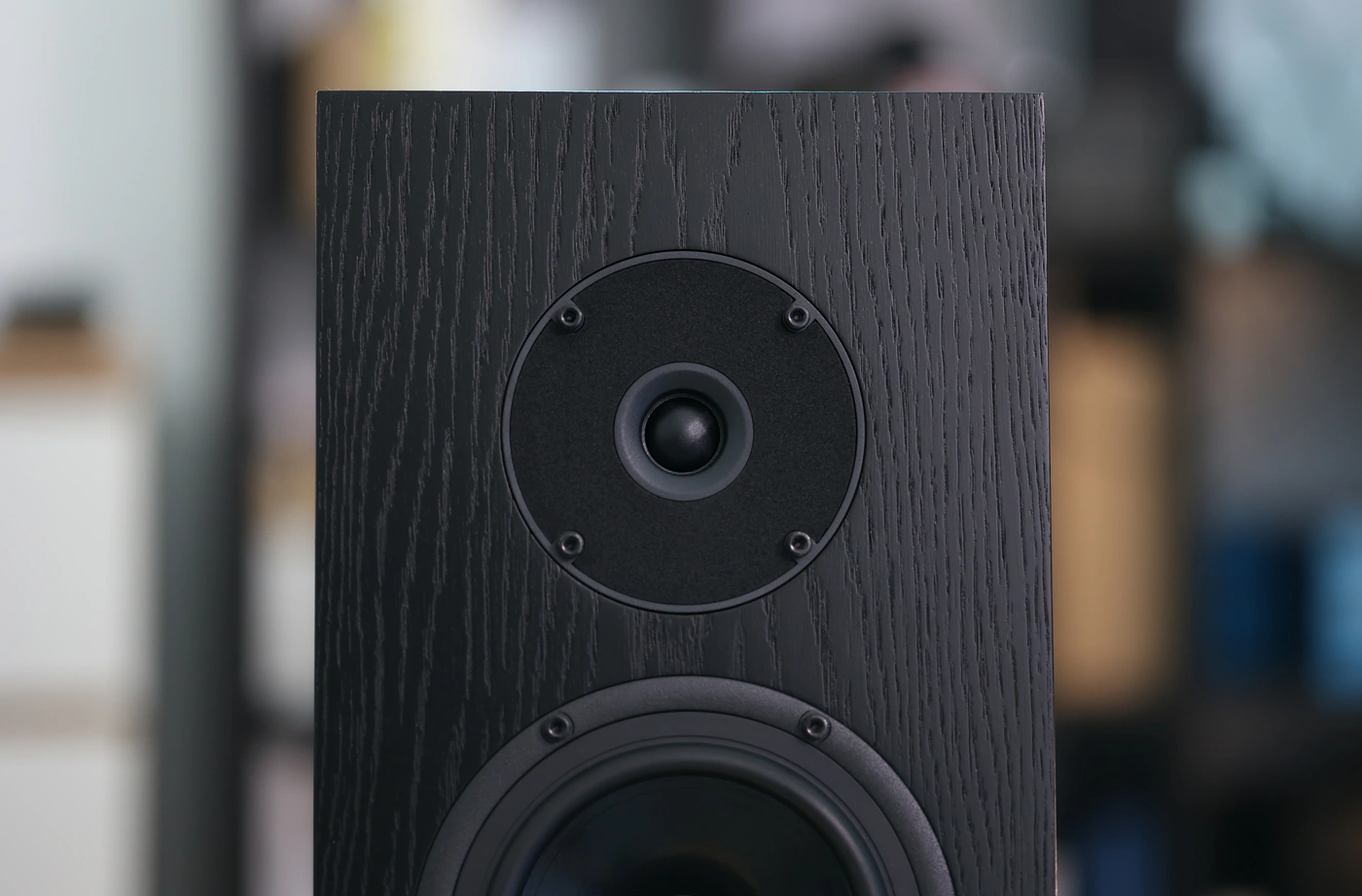
The size of the room doesn’t matter too much, and I found that Diamond 30 can sound downright awesome in small and crowded rooms, although the sound gets bassier and fuller, but also in really large rooms, up to 40 square metres, where the sound is also excellent, dynamic, punchy and vivid, with still the bass better than what I would get from most subwoofers (faster, better resolution, just as deep as a subwoofer). While the acoustic treatment of a room helps, Diamond 30 mkii is not picky with the room treatment, and it shows some improvement, but sounds excellent with zero room treatment, or even if they are not placed symmetrically lateral towards the walls of the room. For example, in a 5×3 room they can sound create if they are placed towards one end of a room on the longer wall, or on the shorter wall too, while in an acoustically treated room they do get a tiny bit better, but are not as needy of the room being treated as much as what I got with Amphion Argon3s or KLH Model Five. This may also have to do with the size and shape of the Diamond 30 mkii, the sound is made to arrive to your ears at the perfect moment, and the speakers themselves fill a room and control the sound, plus the speaker enclosure has very low resonance and THD, so thanks to their long and thin shape, very little standing waves reach you from any listening position.
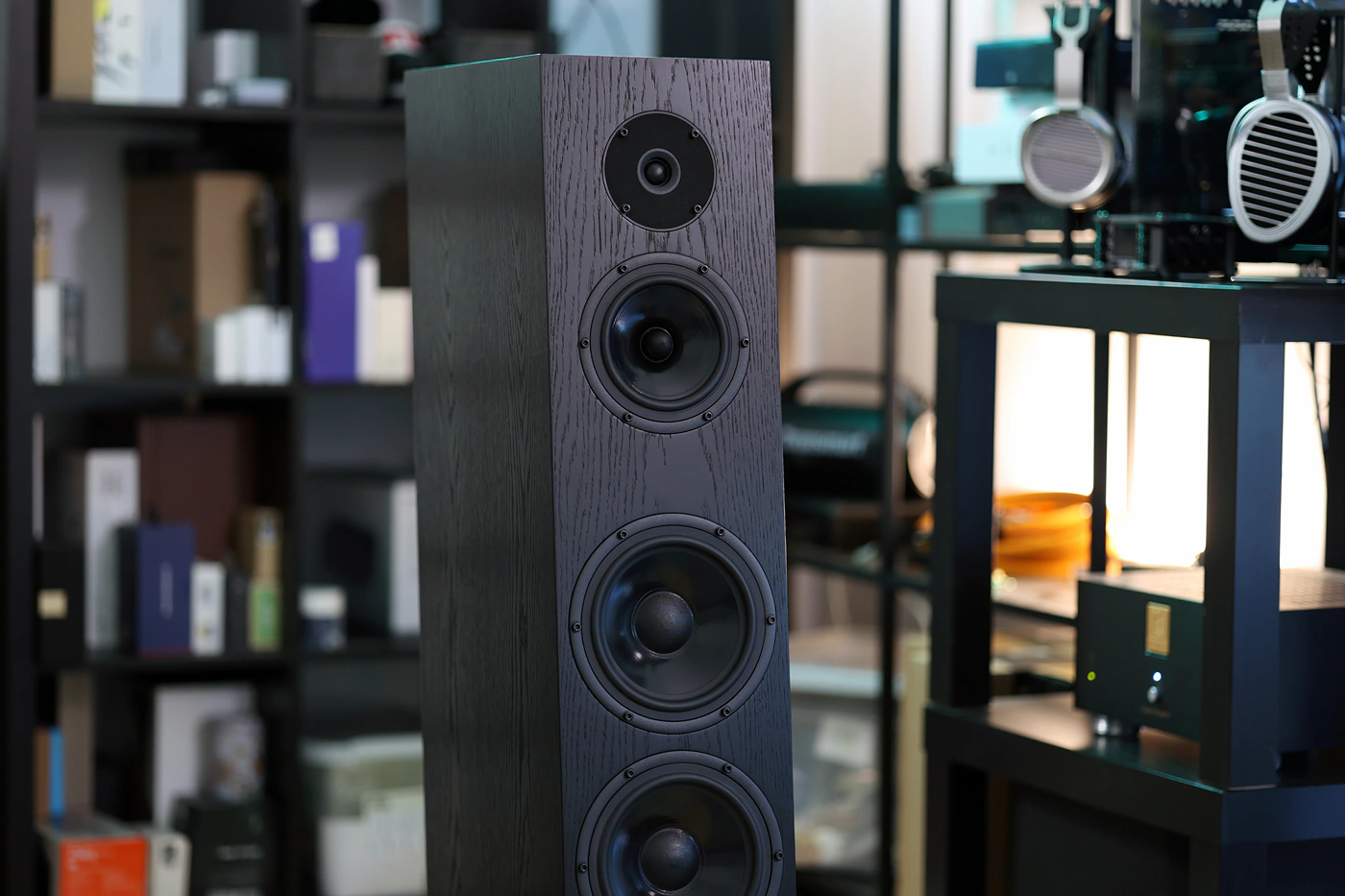
Pylon Audio Diamond 30 mkii is a pair of speakers which does not require careful placement, and the long feet at the bottom ensures that you will not be getting them too close to a wall. Basically, even if the back feet touch your wall, you still get enough space so that the passive bass ports at the back are far enough from the wall to work well. Placing the speakers further away from the wall behind does not improve the sound, and by that point you require at least some marginal acoustic treatment. I lived for a long time with the impression that a speaker with a sealed design, or with passive bass radiators would be better, but the ports on Diamond 30 mkii are superior to everything I’ve heard as far as bass reproduction goes.
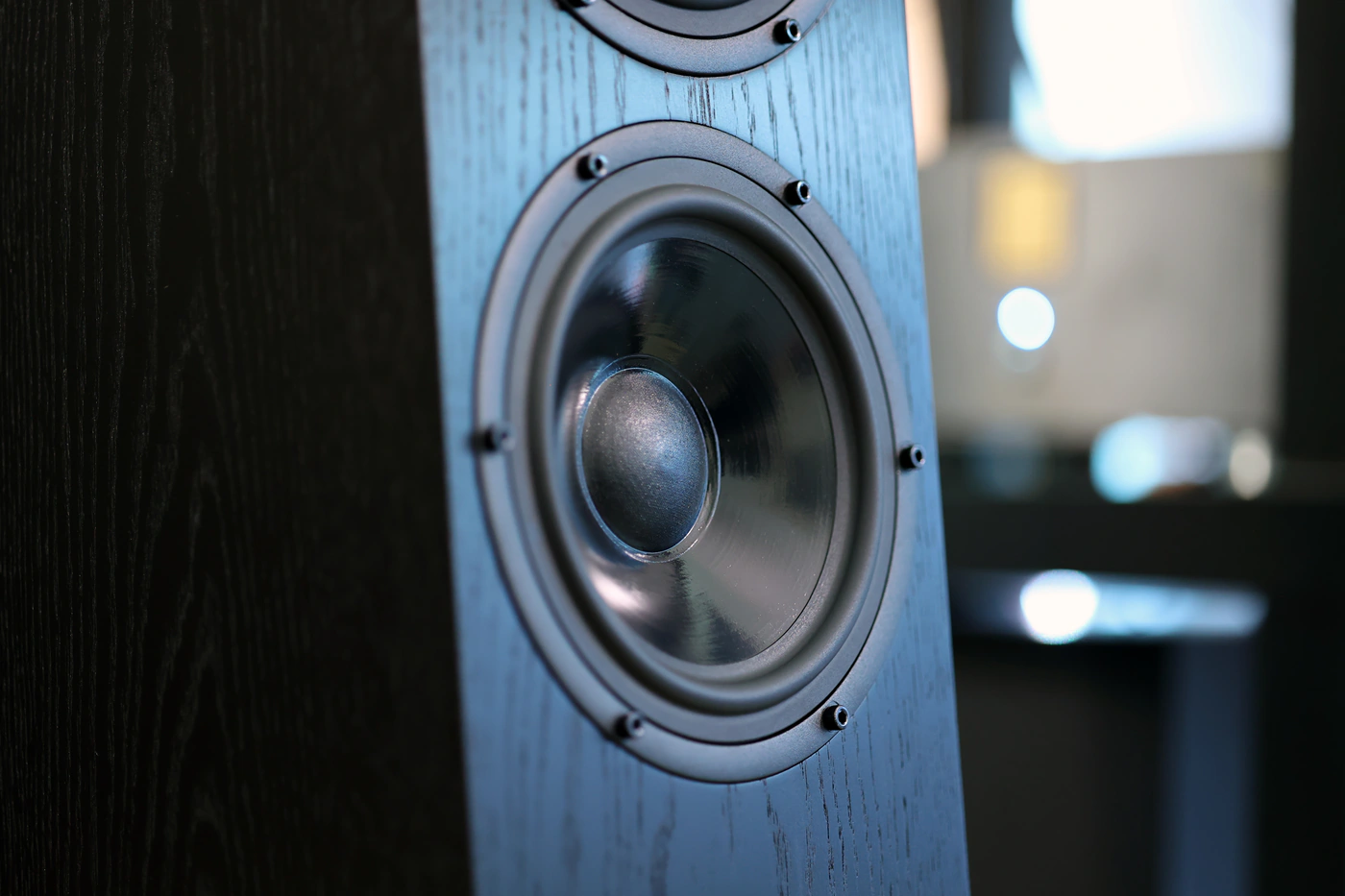
To power the Diamond 30 mkii you will need a beefy amplifier, preferably in Class A or AB, as following my tests, the resolution and fast impulse response of the speakers really shows the quality of the AMP. While the SPL Efficiency of 90 dB is not a high one, it is not a super low one either, and the impedance of 4 OHMs means that they will work well with most amplifiers out there. The nominal power indicates what wattage the ideal AMP should have, slightly higher being great, but lower not so much, as you risk having an increased THD or Total Harmonic Distortion. I have used Keces S300+ with excellent results regardless whether it was running in full Class A or Class AB, but was not quite as happy with any of the Class D AMPs I have paired with Diamond 30 mkii. To be honest, I somewhat liked the sound in Class AB better, as it was more musical and less overpowered compared to full High Bias Class A, but that’s a special operation part for S300+, as in full High-Bias it can sound really powerful and the drive factor is high.

We have excellent vertical dispersion, around 90 degrees, so regardless whether the tweeter is right at the level of your ears, or a bit higher, or a bit lower, as long as there is 1-2 metres between you and the speakers, you will get excellent sound regardless of the height. The other drivers have excellent vertical dispersion as well, and I feel no need to fiddle. Diamond 30 mkii will sound excellent even if I am standing or sitting, everything works perfectly. The most ideal spot is if the tweeter is at ear level, but anything lower or higher will still work well, thanks to the angle of the speaker itself.
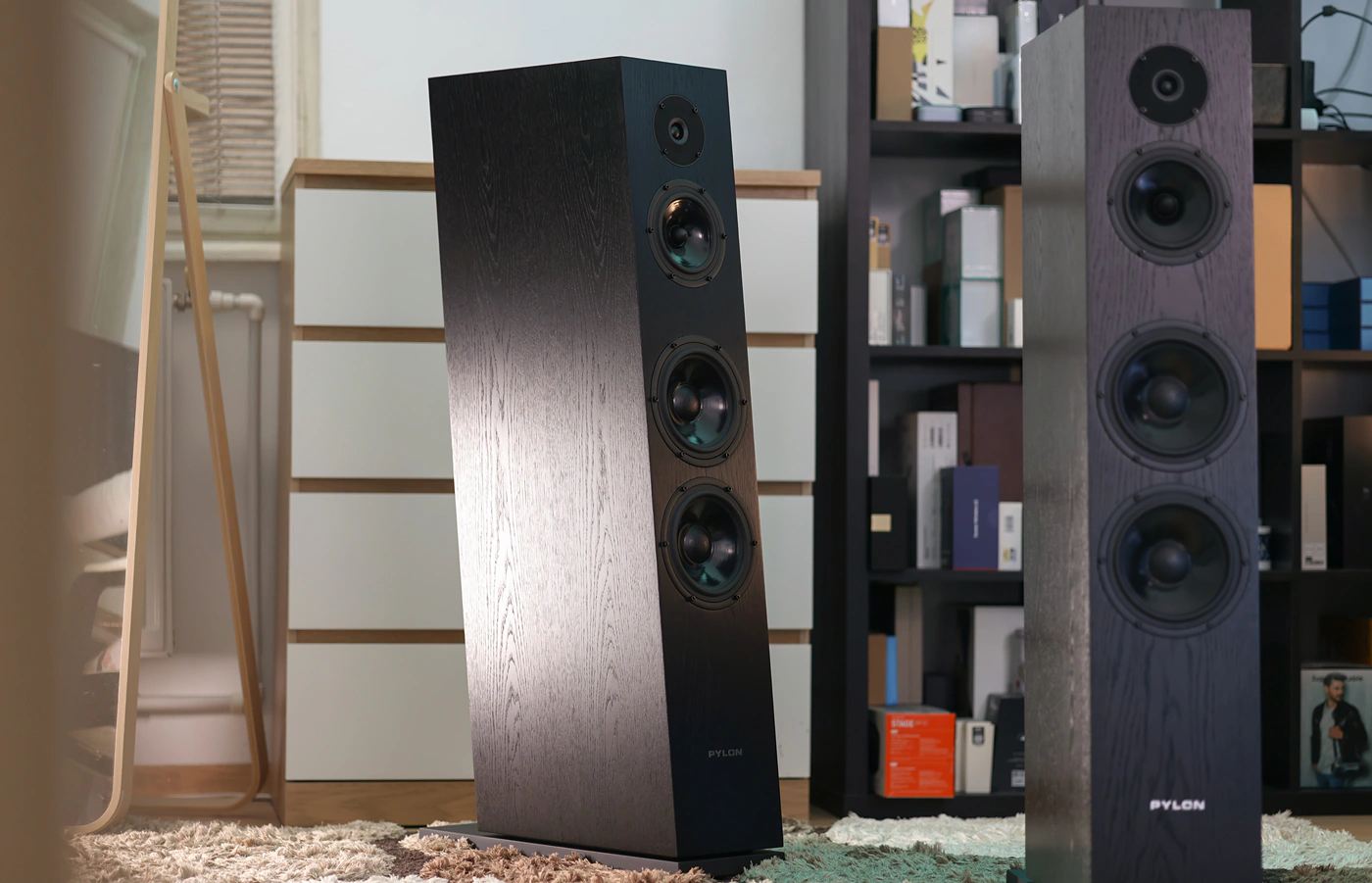
The lateral dispersion is also quite excellent, around 110 degrees, so as long as the speakers are aimed at you, and there are no objects in between, they should sound excellent, with no need to have a specific distance between you and the speakers. I found that sitting at the computer with the speakers on the sides and angled towards me slightly will sound almost as good as if sitting 3-4 metres away from them and listening in a typical hifi position, on a sofa. The sound gets more complete and fuller if standing farther away from them, but it is a small difference, they basically sound downright excellent regardless where you are in the room, as long as you’re somewhere in front of them, and not comically above or below them.
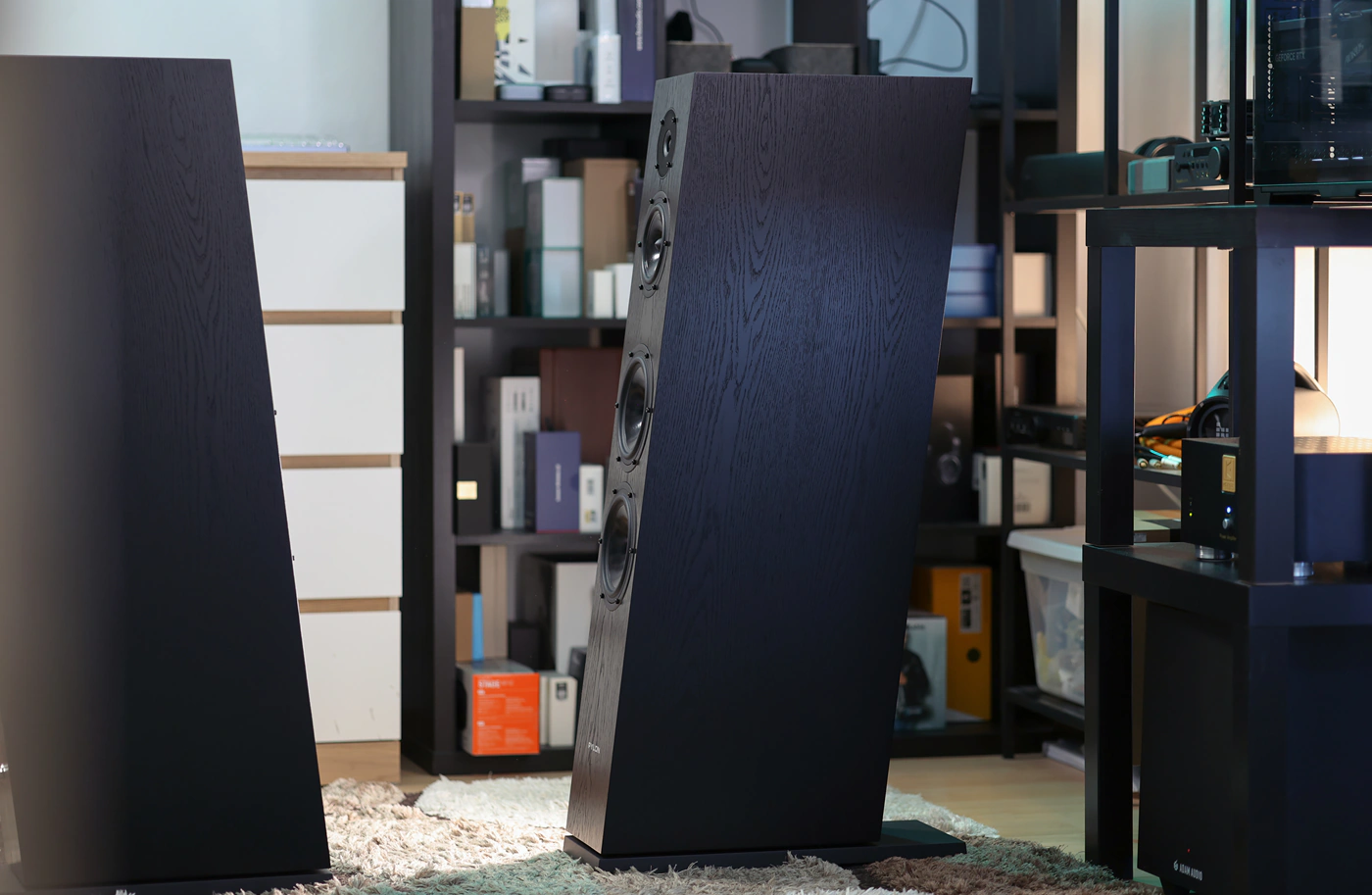
This helps a lot for their gaming usage too, as I received a lot of questions, but I have used the Pylon Diamond 30 mkii exclusively since they arrived, replacing my main listening setup, so I can confirm that they are comfortable to use on a wider gaming setup. My desk is 1.5 metres long, and the speakers are spread apart about 2.75 metres in width, creating an excellent experience for me. The sound is very spatially accurate, and the listening position gets beautiful soundtracks played right into my ears, creating a perfect staging and imaging for the Diamond 30 mkii. Sitting further away creates a bigger sonic image, but creates less lateral separation and music becomes a bit more relaxed than if sitting closer to them.
Sound Quality
Overall Signature – As is the case with most speakers, the sonic presentation of the DAC, AMP and even cables can influence the sound you’ll be hearing from the speakers, not to mention the room specific treatment and resonance, but Pylon Audio Diamond 30 mk2 has a specific tuning you will hear regardless how you drive and place them. The tuning is clean, clear, natural and juicy, cohesive and colourful. The soundstage created is really wide and holographic, with what I can call the most beautiful midrange I’ve heard this year from any transducer, they simply make every instrument shine and stand out. There is a bit of upper midrange extra sparkle, which adds life and emotion to female voices, a vivid presentation to guitars, and brilliance to pianos and cymbals. The bass is deep and controlled, fast, but large in amount, while male voices are deep and satisfying. There is very little coloration across all frequencies, and while with most speakers I can call out what they present in an unnatural fashion, Diamond 30 presents everything naturally, there is no exaggerated frequency range nor any recessed frequency range that would take you away from your music and reduce your fun while listening. Basically, everything is perfect in the sonic reproduction and this stays true for most rooms, even those with zero acoustic treatment, and even when the speakers are placed in an non-ideal listening position.
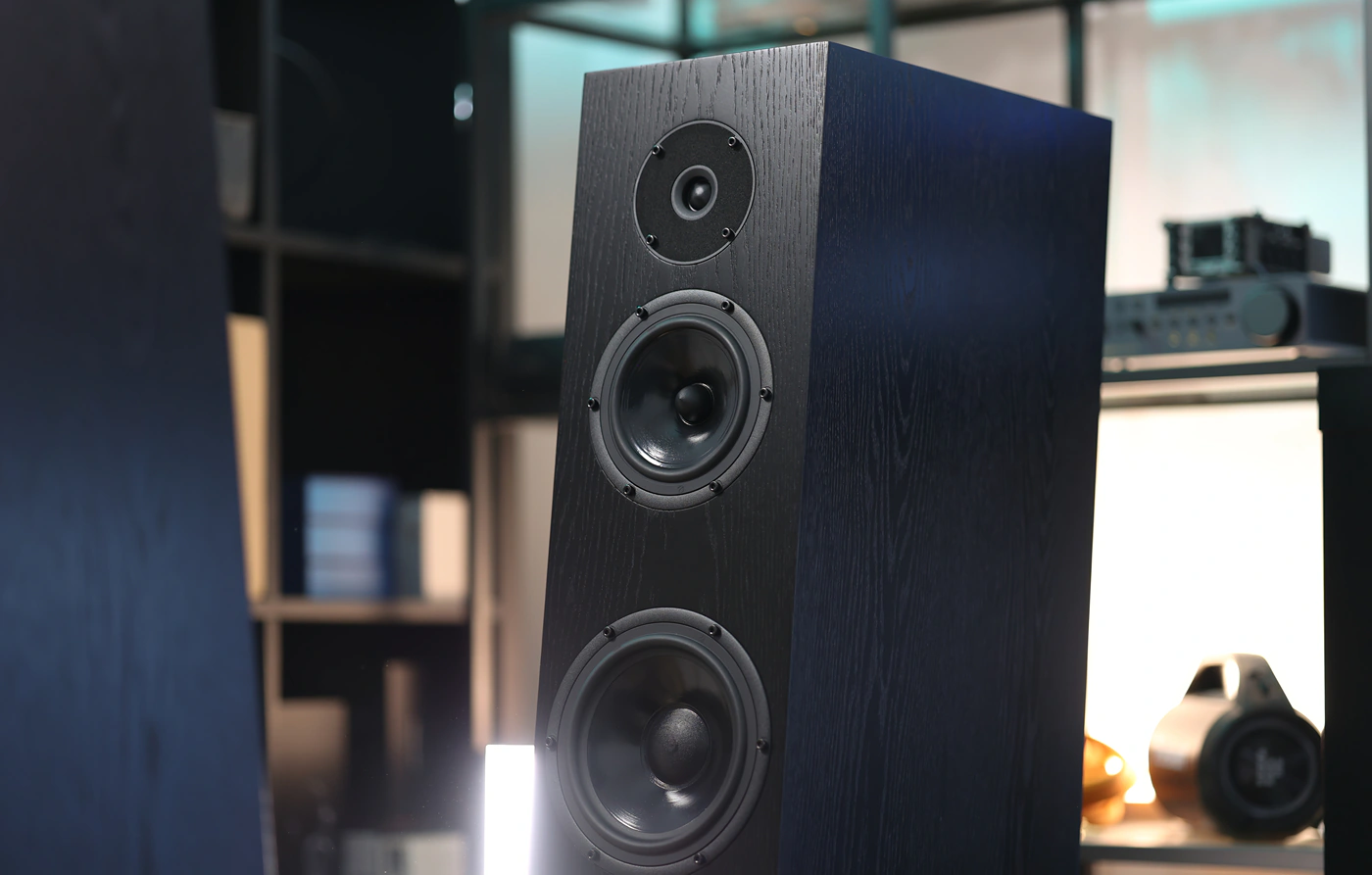
Bass – The bass of the Pylon Diamond 30mkii is the first part that impresses you as it immediately makes you ditch your subwoofer, and realise that a sub is not needed to enjoy music, if the speakers are capable of reproducing proper bass. The bass can climb as low as 30 Hz audibly, and it is incredibly clean and controlled, making most subwoofers feel as if they’re lazy and lacking behind the speed and precision of the bass as presented by Diamond 30 MKII. The bass reproduction is spread evenly across the entire infra frequency range, the bass can actually reach full depth and sound full around that range, it is full, deep and lush, but fast and controlled. Most speakers lag behind when it comes to quick and technical music styles such as Trancecore, Deathcore or Technical Death Metal, but Diamond 30 has one of the fastest impulse response in the bass and can react to the drop of a pin, or in this case to exceedingly fast drum patterns, all while creating a full and warm bass for jazz and classical music. For large and massive bass, Kesha’s Cannibal song shows a playful, deep and warm bass which is controlled really well, even at very high volumes. Diamond 30 Mkii can totally rattle both your rib cage and your room, including the walls and windows, if brought to very high SPL, without losing control and refinement, but this is a pair of speakers designed for clarity and impact, not for sloppiness, so expect the bass to hit fast, retreat quickly and provide a nuanced presentation. I often forget that even simple commercial pop can actually show a superb bassline if played on the right speakers, as most other desktop speakers just show the same bass across all songs, while Diamond 30 mkii shows finer nuances and differences in the bass sound across songs or even in the same song, as the speaker cabinet doesn’t have a specific resonance point that is enforced on all songs.
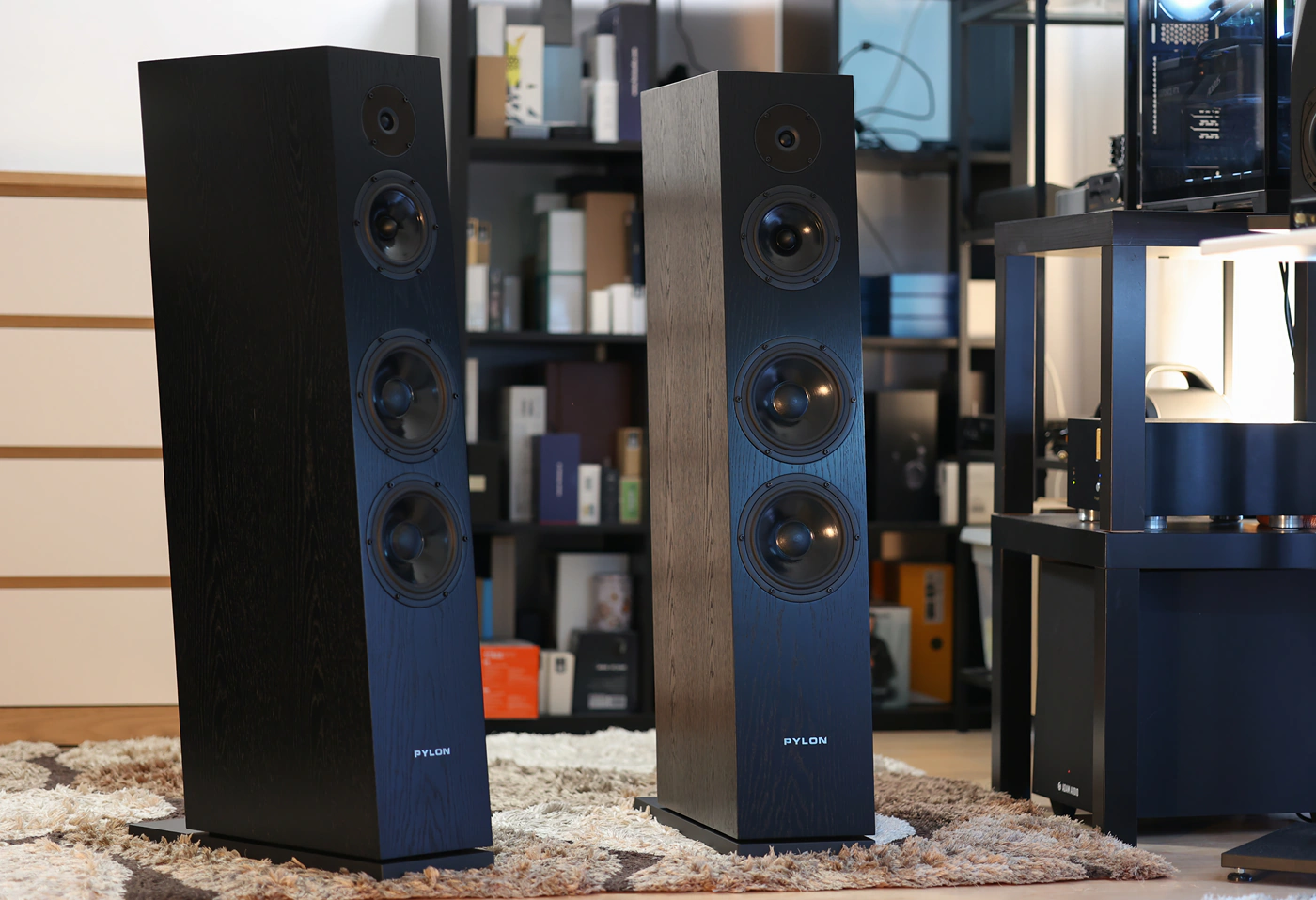
Midrange – The midrange of the Diamond 30 mkii is rich, detailed, and lush, they sound fluid but have a resolution and clarity that shows every single bit of info recorded in the song. This includes micro details, all without sounding analytical, cold or bright, rather they sound transparent, clean and musical, transients are reproduced naturally, if ever so slightly on the softer side, enough to take away unnatural digital brightness, while micro details, micro textures, and transients are reproduced beautifully. This kind of high-resolution sound is excellent for both classical, orchestral, but also EDM, pop, rock and metal. The midrange relative to the bass to the treble is balanced, there is no strong preference for a frequency, everything sounds right in its place as it would if someone was playing the instrument right in the same room as you. Both male and female voices are sweet, pleasing, and musical, there’s a certain magical richness and smoothness to voicing that makes them cohesive and coherent, despite the multi driver design of the speakers, the sound of each does actually arrive to your ears at the same time, the cut off points and crossover is crafted masterfully for a sweet and delightful sound. In songs like Katy Perry – Who Am I living for, I am for the first time noticing the richness of effects playing in the background, and how Katy’s voice is presented in multiple layers, especially during the chorus, creating a bountiful presentation that’s just emotional and pleasing. To test the guitar reproduction and hard to reproduce male voices, Fall Of Troy – Chapter I: Introverting Dimensions also shows the richness of the sound with Diamond 30. The upper midrange and lower treble has a strong shimmer which puts life and energy in the cymbals, while the bass is eagerly waiting for the drums to attack, along the whole length of the song. Once the song gets really busy, Diamond 30 keeps all instruments separated and well defined with ease. The circus that has brought us back to these nights is also an excellent choice, as it shows just how well separated the solo guitar is playing on the left channel during the first verse, and then the guitar notes pan onto the right channel easily and well defined during the chorus and verse 2. There’s a certain richness and cohesiveness to the song, cymbals shimmer with energy and the soundstage is wide, with just two speakers being able to project sounds that feel as if they’re coming from the back of my head, or even above and under the staging, this one song being crafted for this holographic presentation.
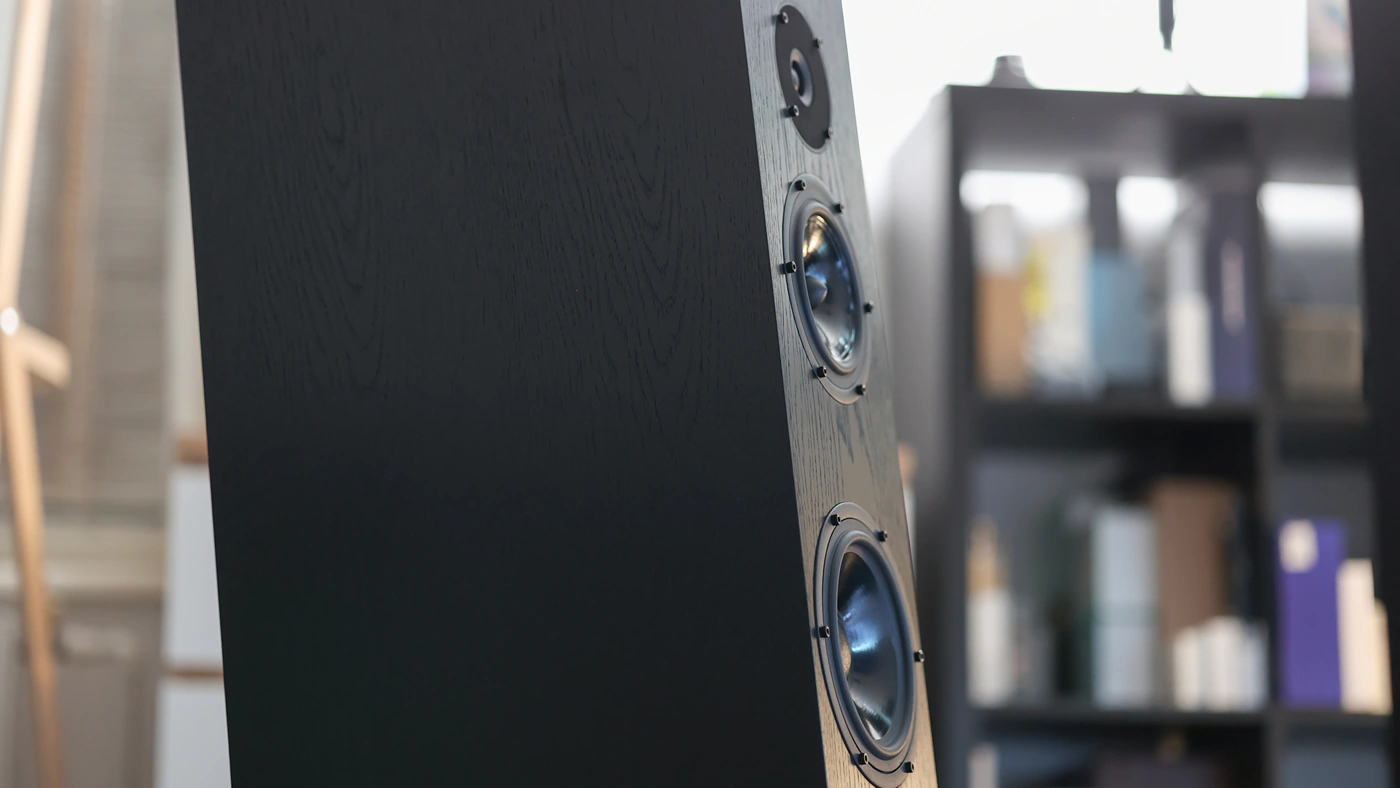
Dynamics / PRaT / Textures – Pylon 30 MKii is extremely dynamic, you get a huge difference between loud and silent sounds / effects, and the dynamic range feels really wide, even rock and metal sounds more expansive, and there’s a far higher difference between instruments than most speakers paint with all songs I played on them. Textures are rich, plentiful, but not fatiguing, and here is the only segment of my review where I would say that there’s a slight difference between driver speed, as the bass driver is superfluid, has a super smooth texture, the midrange driver sounds smooth, but can paint square waves nicely for EDM and Trancecore, while the tweeter has a slightly faster speed, and shows more texture, more shimmer and brilliance, throughout the whole treble presentation. Diamond 30 mkii shows most music as grain-free and smooth, fluid and musical, but occasionally will show a problematic recording, for example, how the cymbals in the Panic At The Disco are mastered for a bit of extra bite and brightness will be revealed, throughout the whole 1st album – A Fever You Can’t Sweat Out. Testing textures and especially synthetic textures is great with One Morning Left – Reetu Inda House, where we have organ and strings synths layered above square wave punchy sounds, combined with the usual metal instruments, and Diamond 30 mkii will show the strings covering the entire background range, but bring forward the voices, and square wave synth keys, while project the guitars and drums right in the middle, creating a layered, but musical and fun sounding, pumped up and dynamic presentation for the song. I love how listening more closely to each instrument, they each have the proper texture and sound, guitars don’t ever mangle up with the strings or voices, every instrument is well defined and the transparency of the speakers helps a lot present them as such.

Soundstage – If you love an expansive, holographic soundstage, you will love Diamond 30 mkii. The best part is how nicely layered the staging is, forward instruments are projected right in your face, forward, punchy and straight to the point. Background instruments are projected far in the back, there’s a huge difference in where each is playing, and all layers of instruments in between are well defined, with the speakers allowing and promoting each song having a specific presentation, so it depends on the song and mixing / mastering whether cymbals are forward or in the background, or if the synths are in your face, or if the voice is, and transparency is one of the most beloved characteristics audiophiles cling onto, as it makes our music pleasing and enjoyable. Compared to most speakers I’ve heard, Pylon Diamond 30 mkii paint a much larger, wider, and deeper image, and they actually just generally sound quite similar in performance to a Kii Three BXT speaker system. I actually am mentioning this comparison briefly because I have auditioned the Kii system when trying to purchase a system for my home listening and audio work, and then Diamond 30 mkii came along, and you wouldn’t believe how happy I was that a pair of speakers costing around 10 times less than the ones I was auditioning sounded so similar, having many of the advantages of a monitor studio such as crisp clarity and great imaging, but also certain advantages such as sounding far less fatiguing, more cohesive and more musical.
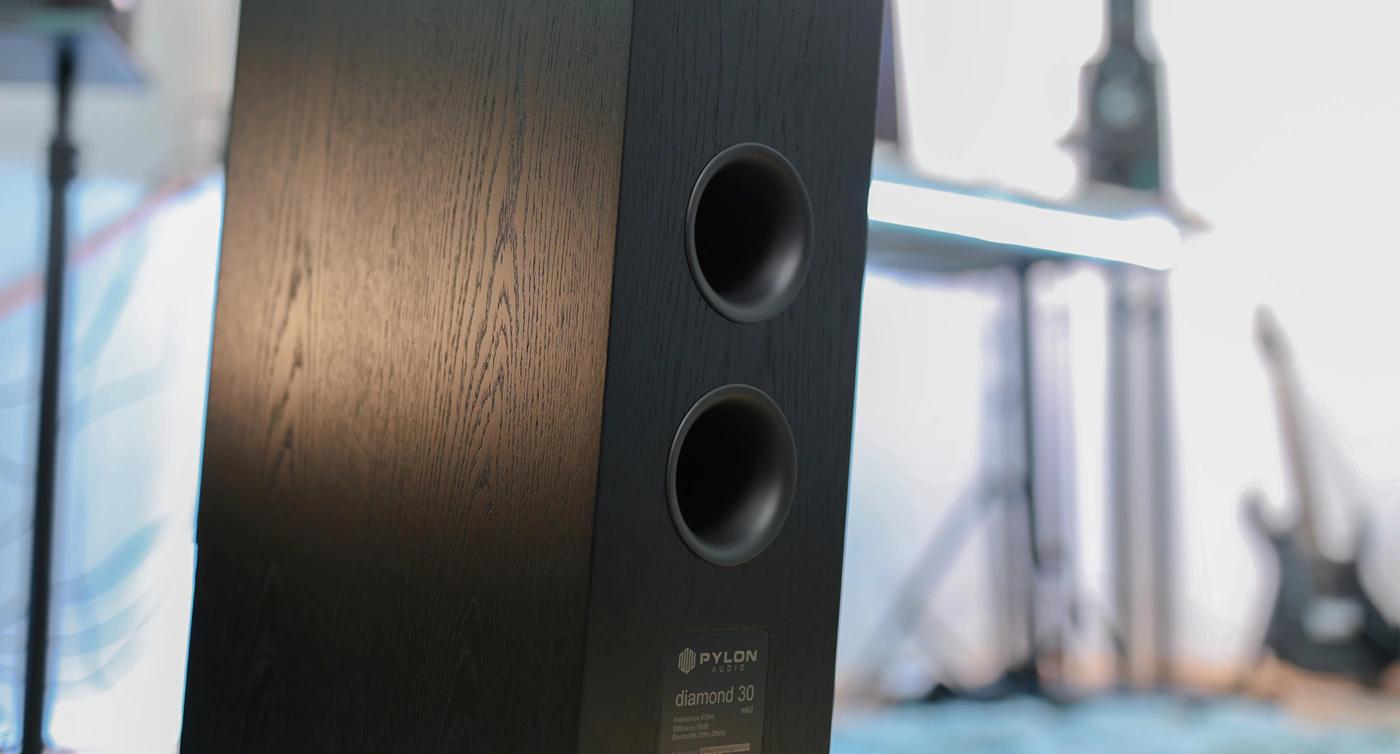
Volume Control – Most speakers in particular will lose a bit of their magic at either very low or very high volume, but Diamond 30 mkii sounds absolutely stunning at super low, low and medium volume. At high and especially at very high volume, the room gain will play more role in the sound you’ll be hearing, and in the acoustically treated room, they sound mesmerising, pushing SPLs worthy of a mini concert, all with proper control and exceptional speed, no audible distortions, but a beautiful musicality and a wide, dynamic sound. In the room with no acoustic treatment, the room gain gets a bit more audible at high volumes, and you will hear the resonance of the room, but there is still no distortion and no change in the character of the sound, the drivers and the crossover of the Diamond 30 mkii still plays with the same level of control and refinement, and with the same tuning and signature regardless how loud of a signal is being fed to it. An important factor here will be played by the amplifier too, Keces s300+ is very linear with volume too, and an AMP that handles volume poorly might affect those results for you, but for me, the sound like this is pure bliss. I find myself often playing games with quiet volumes late into the night, or even working on music tracks at quieter volumes, but also dancing with my wide with Pylon 30 mkii powering our room with a rumbling bass, like a mini club right in our living room.
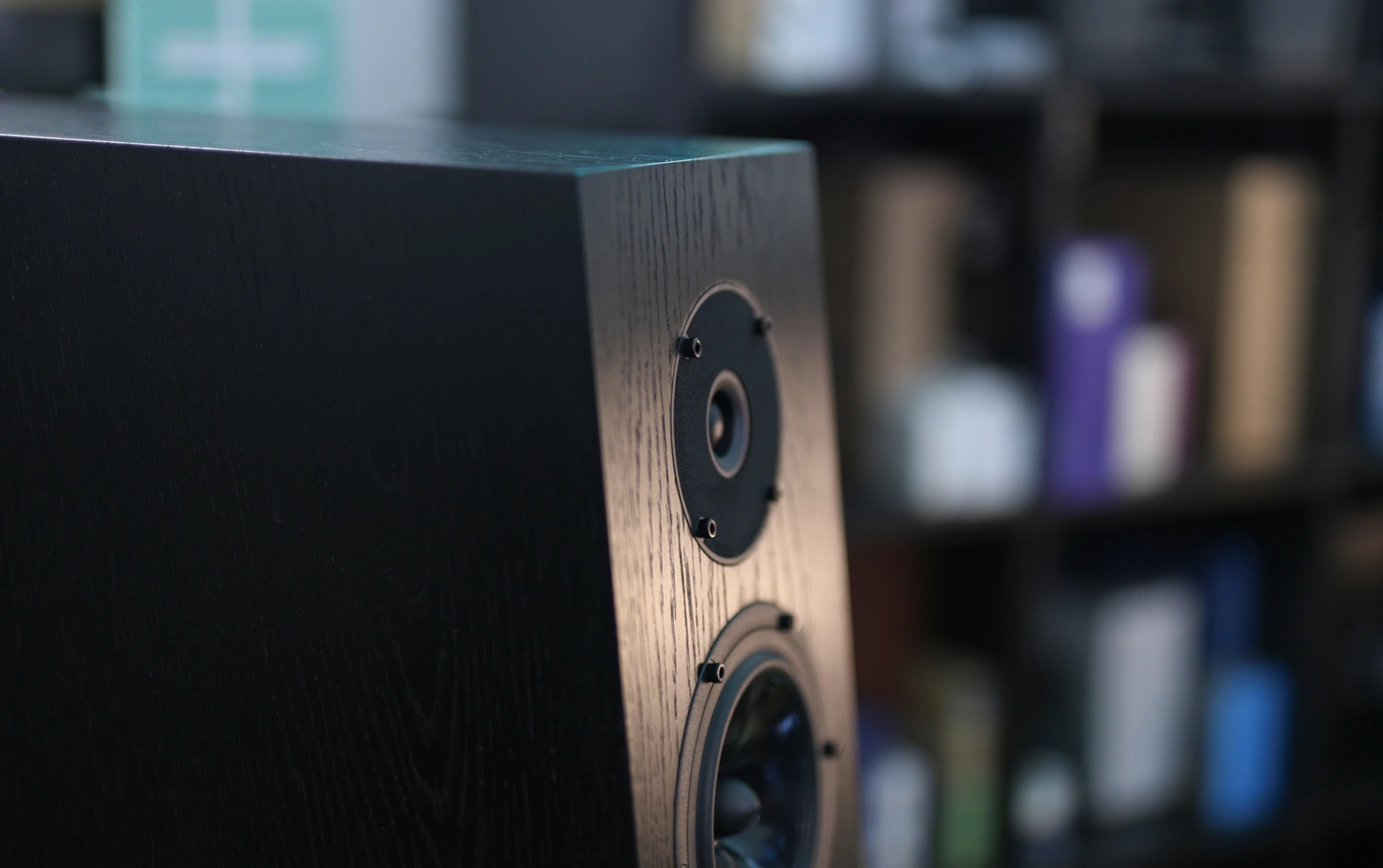
Treble – Most speakers I have reviewed to date got the treble either way too quiet and rolled off entirely, like Taga Harmony 806F, or really bright, edging on fatiguing like KLH Model Five, which needs a treble cutoff and a Bass Boost to actually sound correct and pleasing, faithfull to the recorded material. Pylon Audio Diamond 30 mkii sounds brilliant, sharp and airy, but the treble texture is natural, not grainy, but not exceedingly smooth either, showing texture in instruments, detail and micro detail, without becoming fatiguing. The presentation is perfect for rock, metal, and even EDM or Classical, but it makes all music fun and enjoyable. I would consider Diamond 30 mkii to be perfectly fun and engaging, airy and open sounding, has good shimmer and an energetic cymbal crash, but still smooth enough in the texture to be listened with no fatigue, even if playing tracks from Maximum the Hormone or Metallica. A really good track to study the entire performance of the speakers is Haggard – Tales of Ithiria – Chapter III: La Terra Sancta, as this one track combines beautiful harp, a large classical orchestra and even rock and metal. The flute and harp is absolutely beautiful while the baritone male voices are deep and natural. Female sopranos sound sweet and the violins airy, played all around in the background. Once the rock starts, the speaker shows excellent control, and depth, revealing all the layers of violons, guitars, drums and rich notes played by each, intertwined, but still separated neatly, each in their own space and layer. Blow instruments have their specific wooden resonance, and violins strings feel silky, and realistic, while guitars have perfect texture and a vivid tonality. The cymbal crashes are sparse, but you can hear how each piano key lingers brightly in space, but still with a rich body and presence, truly an interesting presentation of a song I’ve heard countless times so far.
Comparisons
For the comparison with KLH Model Five and Amphion Argon3s we used Keces S300+ as the amplifier driving the speakers, paired with a Dethonray Listening M1 DAC, Aune S9C PRO, Burson PlayMate 2 Basic, or with a HIFIMAN Goldenwave Serenade DAC. The cables used between the speakers and the Amplifier have been the Ricable Invictus Reference Cables, and we used a SPL metre to achieve volume matching. All have been placed in their ideal orientation and placement in both an acoustically treated room, but also in a non-treated room, to compare dispersion, signature, SPL and everything else. The reason we chose every comparison has been price bound, as I wanted to highlight what the same money can get you, regardless of the design. This is even more important because the price point of Diamond 30 MKII gives them a good position in the market.
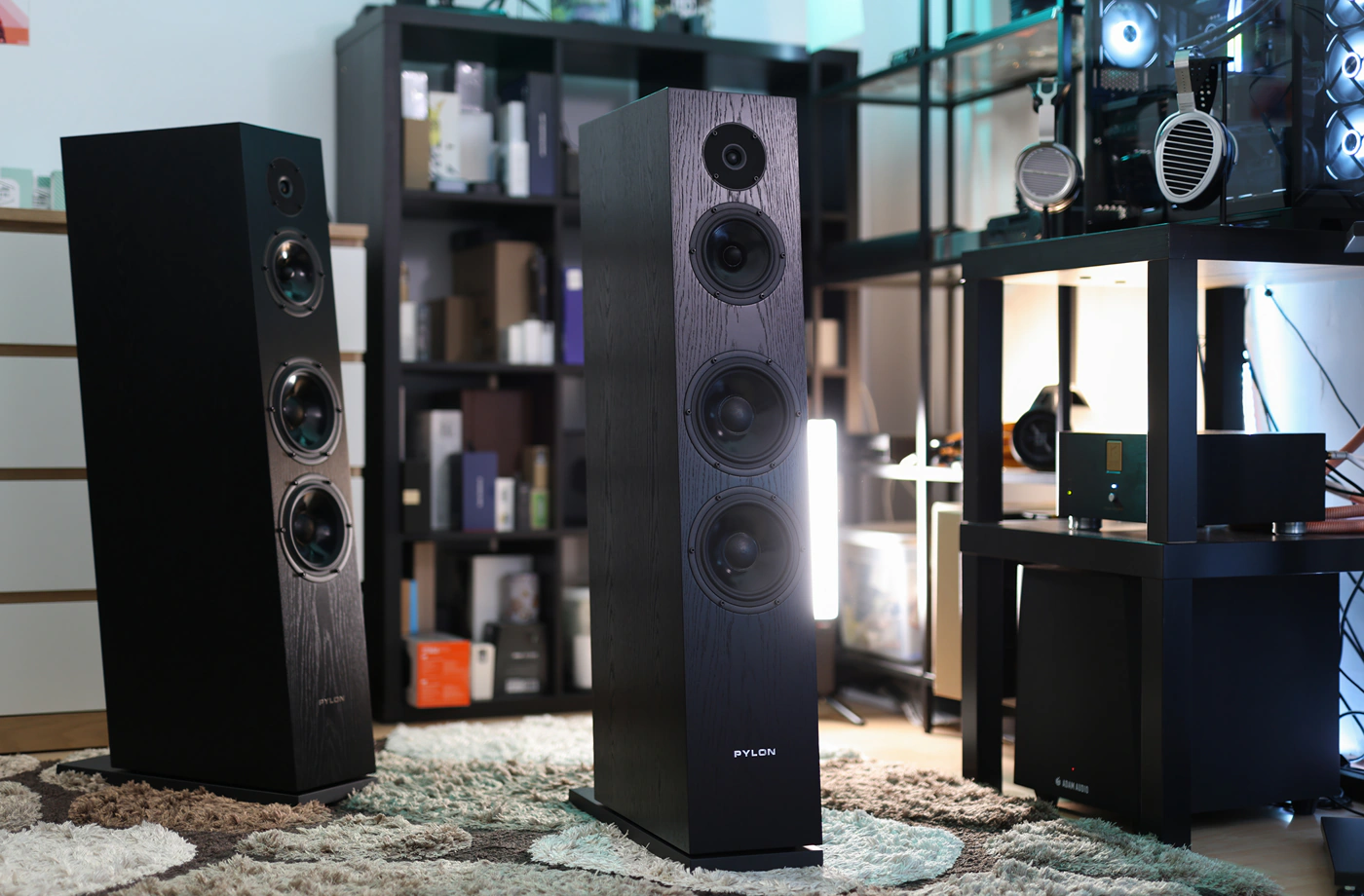
Pylon Audio Diamond 30 MKII vs Aurender S5W (3000 USD vs 3000 USD)
Build – S5W is made of metal fully, but when you see just how much high-end tower speaker you can purchase with the same money, you feel like Diamond 30 MKII is more worthy of this price tag, while S5W is clearly a premium product for someone who is space constrained and can’t have proper speakers. With Diamond 30 MKII you will need a DAC, a Speaker Amplifier, Cables and knowledge to properly place them and use them, while S5W can be placed on your fridge and still give you a great listening experience. S5W is wireless only, and needs the Aurender adapter to work, and chainsaw batteries if you don’t want to have each speaker bound to a wall outlet. Sadly, up to this date you can’t pair S5W with a subwoofer, which would have been really necessary, while you can do literally anything you desire with Diamond 30 MKII.
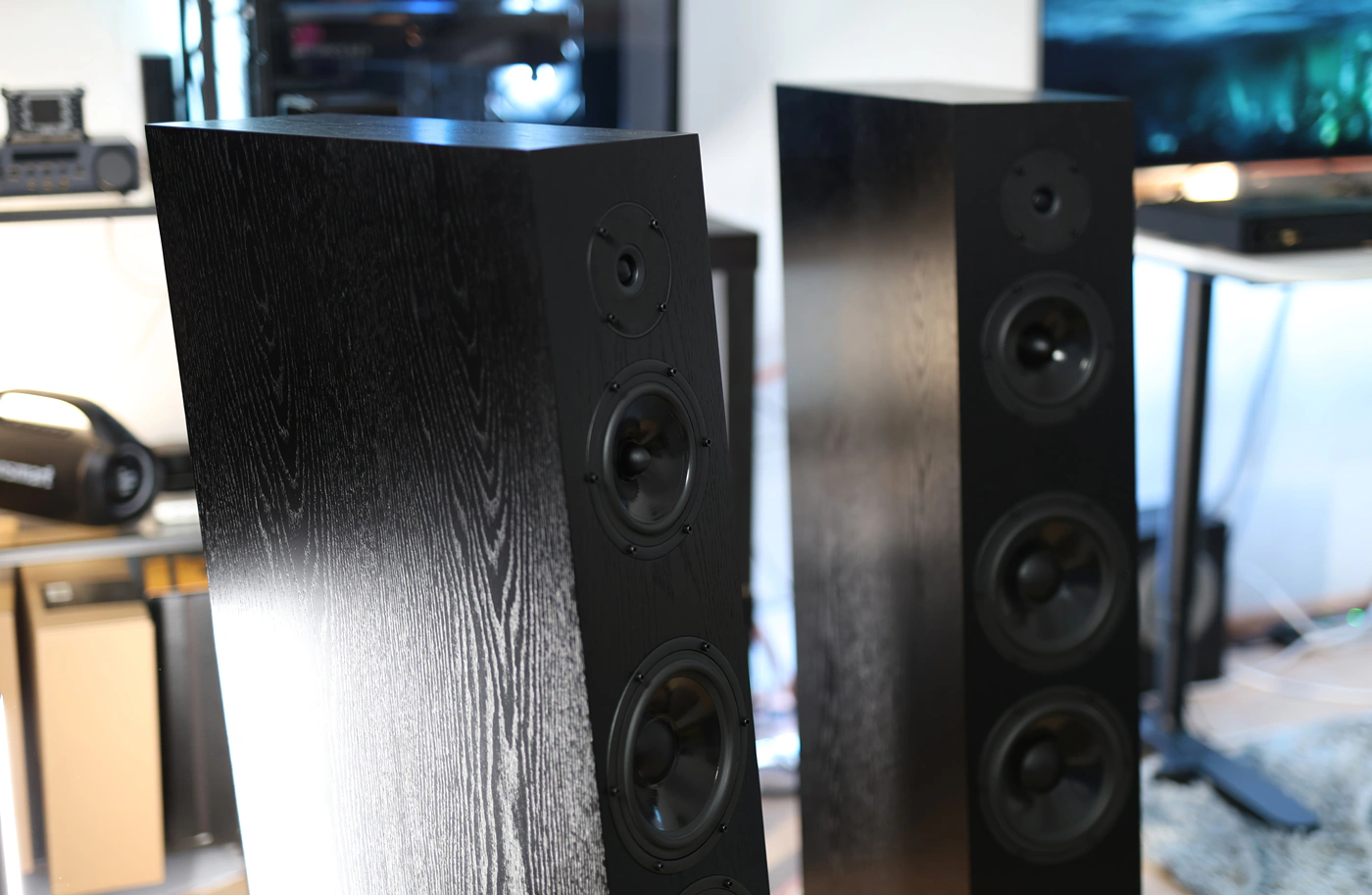
Sound – Sonically, Diamond 30 MKII slaughters the s5W in every aspect possible, without any trace of remorse, Pylon Audio simply created a speaker with a higher dynamic range, better driving power, more impact, better bass, and better treble shimmer, without sounding as metallic and harsh as S5W. The tragedy for S5W is that the bass entirely rolls off below 70 Hz, so you will not get any kind of bloom to contrast the bright and sharp treble, so they end up sounding really harsh and bright, metallic and fatiguing when turned loud, while Diamond 30 MKII sounds so full, and climbs so well down in the sub-bass that I challenge you to even find a subwoofer that would compliment their quick and satisfying bass. Basically, Diamond 30 MKII does everything better than s5W, is a much better purchase if you want to spend the extra to power them, the only downside being that they are much larger physically.
Pylon Audio Diamond 30 MKII vs Amphion Argon3s (3000 USD vs 3000 USD)
Build – Getting to a more fair comparison, Argon3s is a bookshelf speaker, large in size, and which uses a passive driver on the back to enhance the bass response from their drivers. While most speakers need covers, like Diamond 30 MKII, Argon3s has metallic grilles protecting the speaker drivers at all times, which is a nice addition for a fashion and design rich speaker. It is much easier to place and get a good sound out of Diamond 30 MKII, they are always at the correct height for your ears, regardless whether you are sitting at your computer, on the sofa, and the vertical and lateral dispersion is much better on the Pylon Audio, creating a better listening experience for both the untreated and the acoustically treated rooms. Argon3s is easier to drive, but it is picky with the amplifier, need the most resolute amplifier, and an amplifier which is not harsh or bright, as the sound is bright and aggressive, especially if you climb in volume.
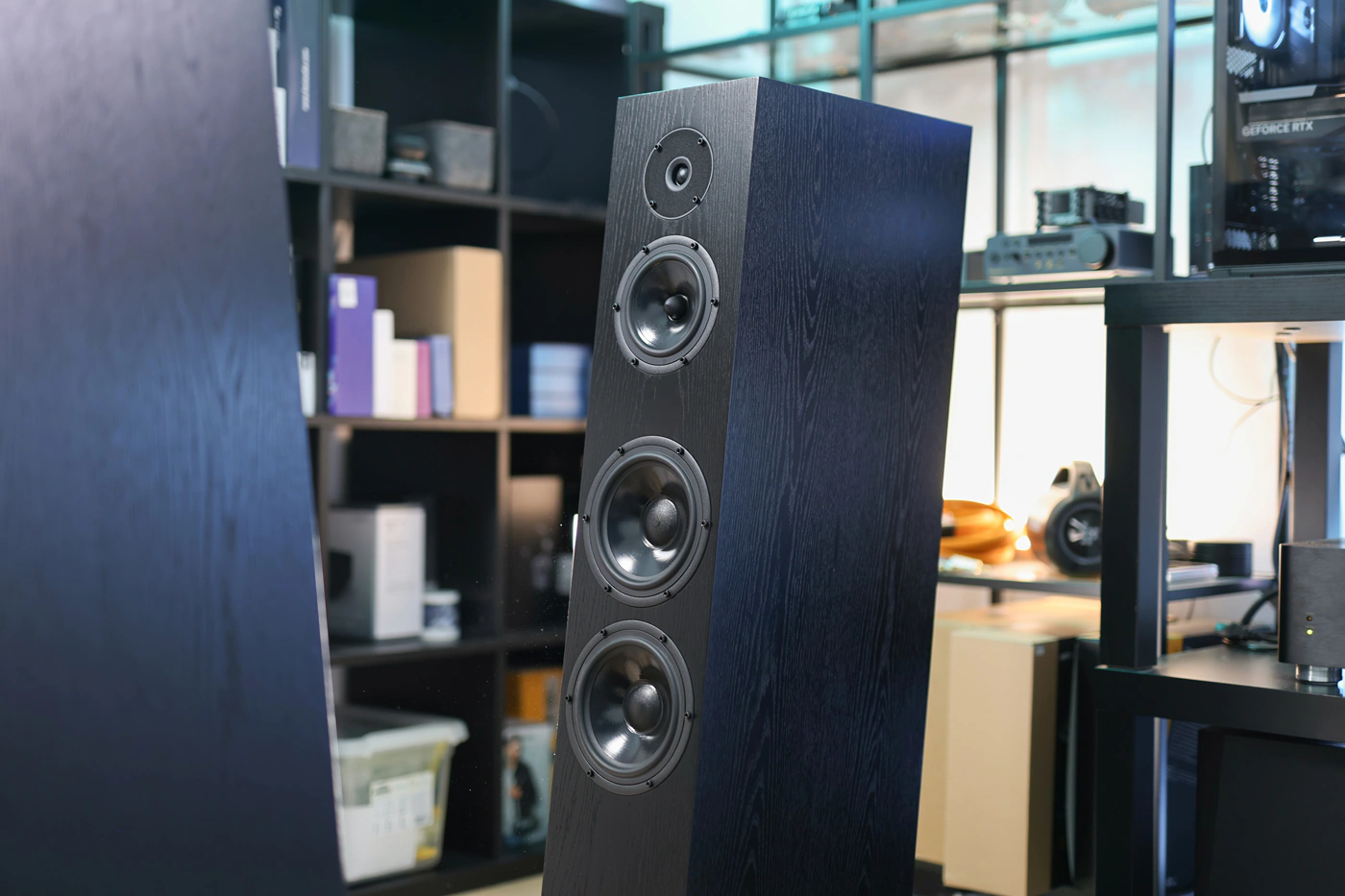
Sound – Speaking of the sound, the bass is much fuller, deeper and more satisfying as presented by Pylon Audio 30 MKII, it can entirely fill my room, both the acoustically treated and the untreated room, without having any odd reverberations. The passive driver on the back of Argon3s would theoretically help give it a punchier sound, but the bass rolls off below 60 Hz, so you will surely require a subwoofer if you’ll want serious impact, while with Diamond 30 MKII I never felt the need to add a subwoofer. The midrange is more detailed, cleaner and more vivid, more musical as presented by Diamond 30 MKII, male voices are thicker and more lush, while female voices are brighter, more expressive and sweeter in sound. Especially when you factor in guitars and pianos, Diamond 30 MKII sounds much more revealing, micro detail is better, and the soundstage is much wider, deeper, the whole sound more holographic. The staging with Argon3 s is rather intimate, so Diamond 30 MKII sounds really wide and instruments are presented in well defined layers compared to Argon3s. The treble of Diamond 30 MKII is a bit softer, but still has proper shimmer and brilliance, while Argon 3s is the kind of speaker I’d listen to mostly at quiet volumes, as it gets hard, aggressive and edgy quickly. I would generally grab the Argon3S for an intimate listening experience and if I wanted a separate subwoofer, but get the Diamond 30 MKII for a really holographic, wide and vivid presentation, with no need for subs, but full bass impact and a lively, concert-like experience.
Pylon Audio Diamond 30 MKII vs KLH Model Five (3000 USD vs 2499 USD)
Build – Model Five is a hybrid between bookshelf and floorstanding, being far too large to be a bookshelf speaker, but also acoustically sealed, with no bass port at the back. Diamond 30 MKII has bass ports at the back, which I assumed would complicated the placement, but in my experience you can easily place the Diamond 30 MKII right next to the wall (the feet which are long in the back won’t allow you to get the speakers closer than 20 cm to the walls), and this configuration will sound really well. It is easier to drive the KLH Model Five, and they are not as picky with the source, but they are really picky with the positioning, and I found that the metallic feet that come in the package are not tall enough for my listening position, while a traditional bookshelf support gets them a bit too high, so you may find it complicated to bring them in the sweet spot for listening. The tweeters also have low vertical dispersion, so not sitting in the perfect spot will affect the sound, while Diamond 30 MK2 will sound great even if you’re standing, if you’re sitting, or if you’re literally anywhere in the room. The lateral dispersion of KLH Model Five is also a bit more narrow, which means that you have to be in between them and have each angled at you for the best sound, while with Diamond 30 MKII, I found that as long as there are no chairs or objects between you and the speakers, the angle does not matter much, and you will have a great experience regardless whether you’re on a sofa at 3-4 metres away, or right in between them and using them as Pc speakers.
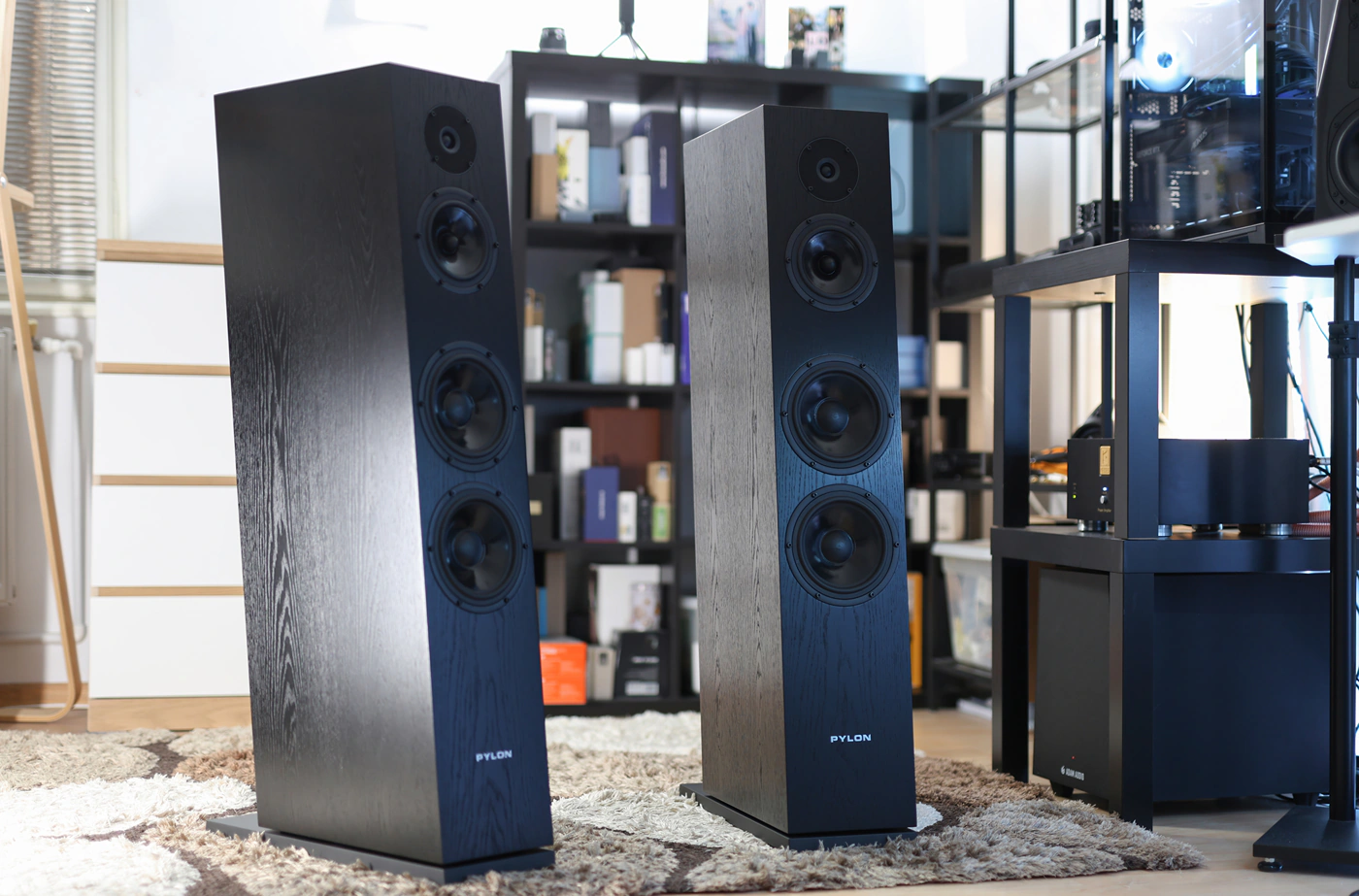
Sound – Pylon Audio created the first speaker that can dethrone KLH Model Five for my ears, as even with smaller woofer drivers, but thanks to a smart design, Diamond 30 MKII produces a fuller, deeper bass with better impact and a quicker bass response than the Model Five. With Model Five, I almost always used a subwoofer, but with Diamond 30 MKII I never felt the need for a subwoofer, especially because the bass response of the speakers is much faster and cleaners than what most subs offer, and you can hear that the subwoofer driver is lacking behind compared to the snappy drivers of Diamond 30 MKII. The midrange of the Diamond 30 speakers is cleaner, more detailed, and voices sound more lifelike, while guitars are juicier, more natural and more vivid. Textures are generally more accurate and more natural with Diamond 30 MKII, and the treble produces a more natural shimmer, while KLH Model Five almost always sounds a bit too bright and aggressive in comparison. I found that in both a treated room and in a non-treated room, Diamond 30 MKII needs no EQ and sounds perfect right away, while Model Five can be improved with a bit of EQ, sounding a bit hard and aggressive by default. Despite all of this, I find that the resolution and impact of Diamond 30 MKII is also better than Model Five, as this is the more convincing and realistic sounding speaker.
Amplifier Pairings
For this segment we have used a few DACs, including Aune S9c PRO, Dethonray Listening M1, HIFIMAN Serenade, and SMSL DO200 PRO DAC for most of the pairings, and a pair of Ricable Invictus Speaker Reference cable.
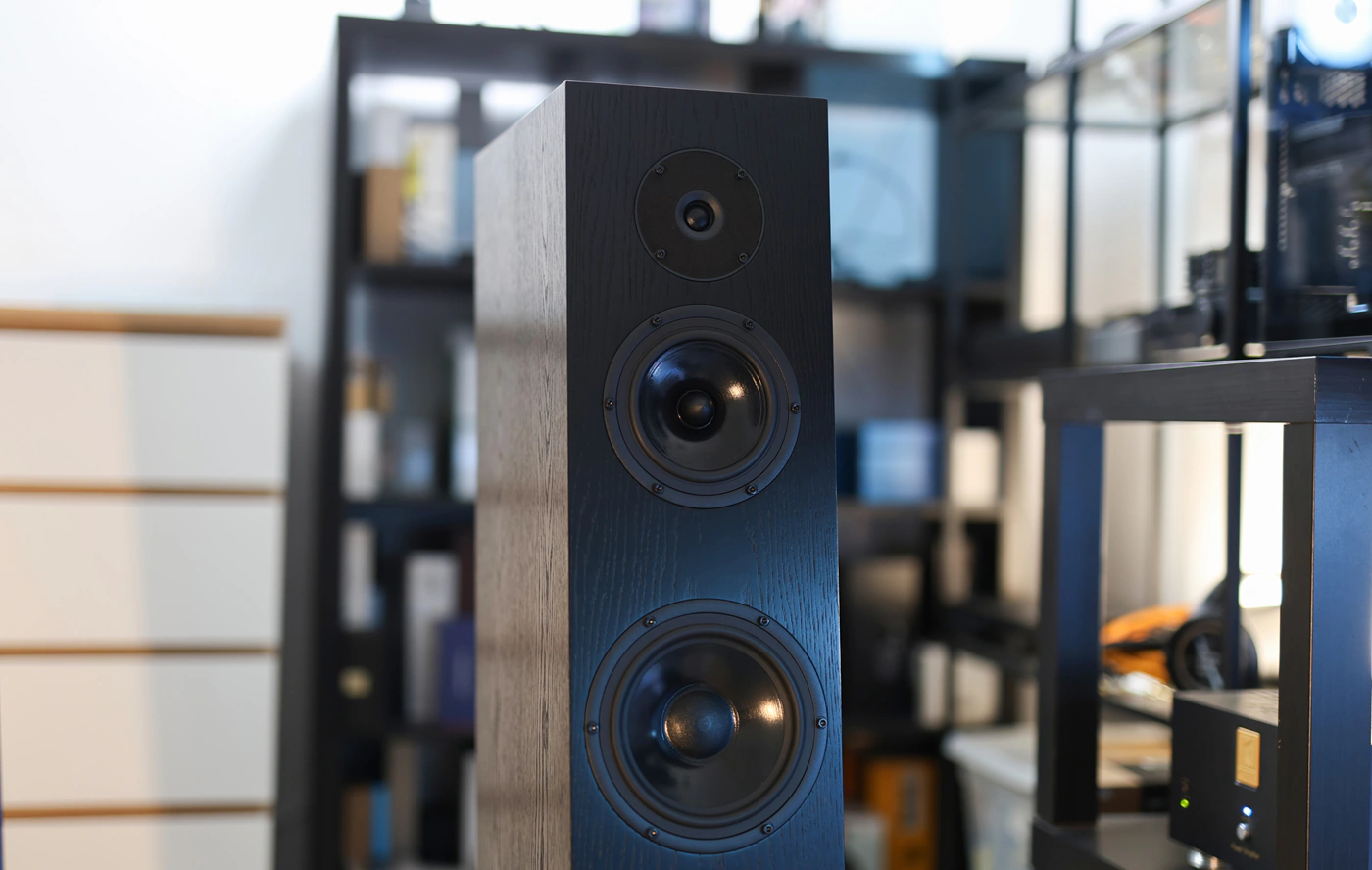
Pylon Audio Diamond 30 MKII + Keces S300+ (3000 USD + 3499 USD) – This has been by far my most favourite amplifier to drive the Diamond 30, S300+ has the best dynamics, most punch and the fastest impulse response out of all the amplifiers I tried pairing with Diamond 30, and also the best clarity, resolution and most expansive soundstage. The only downside to the setup would be the pricing, and the fact that S300+ amplifies everything, including source background noise, so a clean DAC is needed, or else you will hear that in the speakers. This setup is not very forgiving and will reveal every detail, micro detail, texture and bit of information in your music, creating a really breathtaking experience, so be prepared for extreme dynamics and a punchy sound with it.
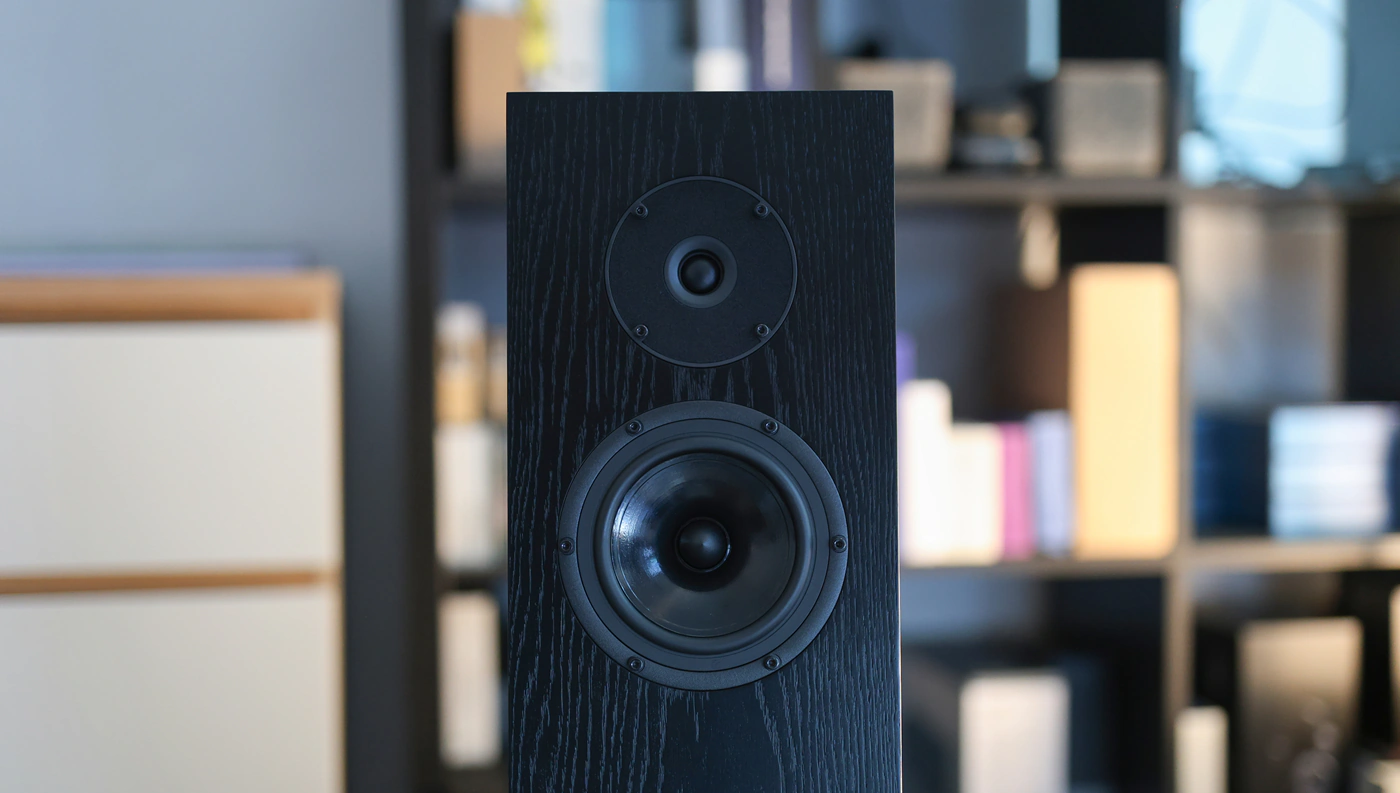
Pylon Audio Diamond 30 MKII + Cyrus One Cast (3000 USD + 2000 USD) – When trying to stay on a budget, you may be inclined to go for a setup which includes a DAC + Streamer + Stereo Amplifier running in Class D, so One Cast is a good, less pricey alternative to Keces if you want to stay on a budget, but it offers a pretty different tuning and signature, with a warmer, fuller bass, but a slower bass and less focus on resolution. The dynamics and the soundstage is on the more intimate and marginally more compressed side of things, while the treble peaks around the upper midrange / lower treble, after which it starts rolling off. Treble and cymbal crashes have more of a metallic, harsher shimmer, while the bass is woolly and bloomier than with a more capable amplifier, but this all creates a more forgiving listening experience, brings the voices in the background and makes most music less critical to listen to, all while keeping that metallic tinge for cymbal crashes.
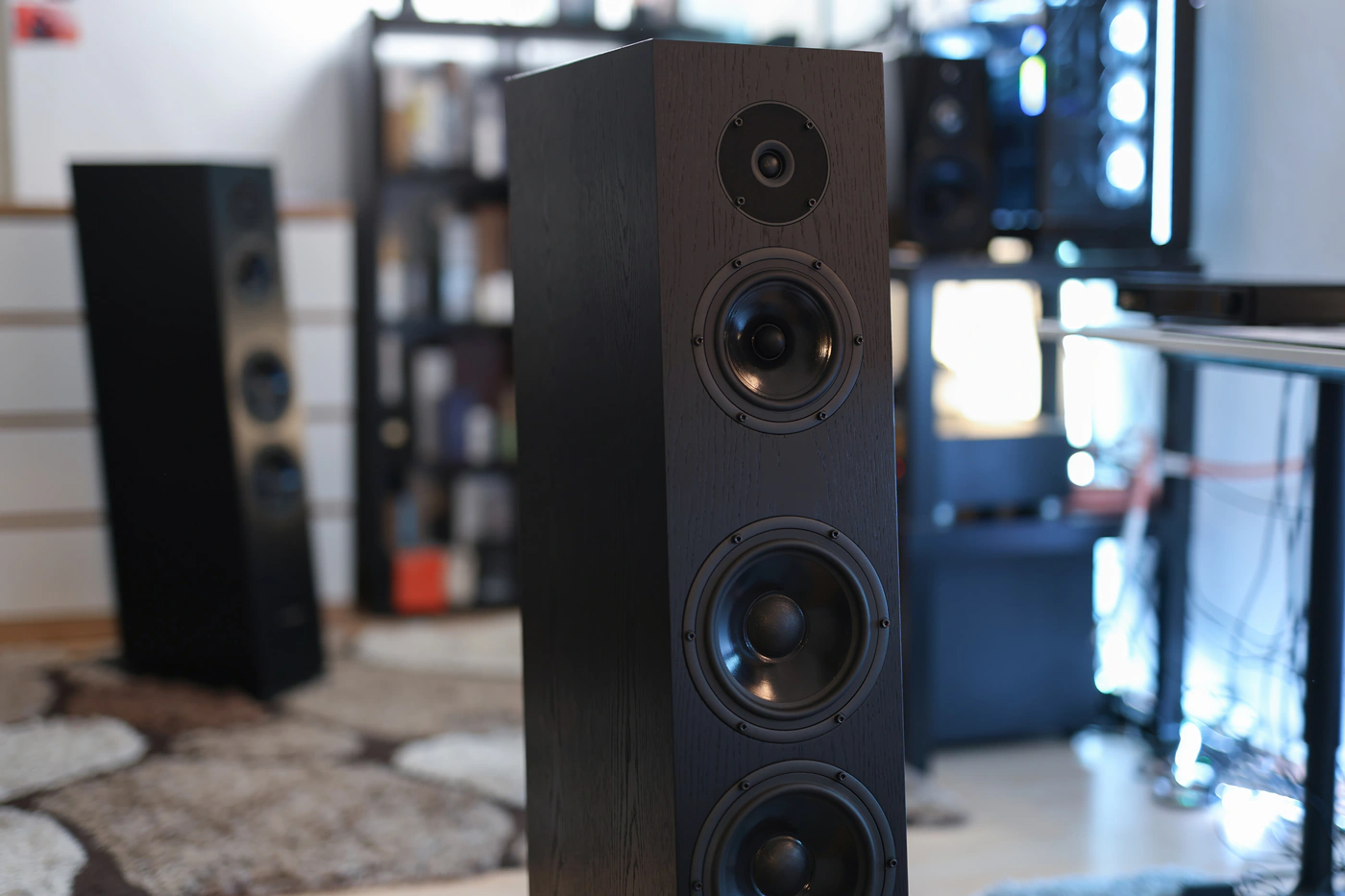
Pylon Audio Diamond 30 MKII + SMSL AO300 (3000 USD + 289 USD) – If you really need to stay on a budget, AO300 is the most affordable option to drive the Diamond 30 MKII, while having about enough power to call the speakers properly driven. This setup creates a softer, less impactful presentation, where AO300 brings the midrange forward, and pulls on the bass and treble, rolling off the treble, and making it silky smooth, while the bass loses impact and edge, sounding bloomy and slow, full but not overly punchy. This setup is forgiving, sounds soft, but still the resolution and clarity of Diamond 30 MKII shines through, and they are far more detailed than the competition, the amplifier just taking the edge off, and replacing it with a flat and forward sounding midrange. The setup would be great for a starter if you can’t afford a good stereo amplifier, but generally Diamond 30 MKII benefits a lot from Class AB and Class A amplification, compared to Class D AMPs.
Value and Conclusion
For the meagre price of 3000 USD, you can get one of the best sounding speakers in the whole world, a pair that makes a subwoofer unnecessary, a pair of speakers that has the treble extension to make super tweeters unnecessary, and a pair of speakers that I personally find boundlessly enjoyable, to the point where I can declare that currently, out of everything I was able to test in my room, Pylon Audio Diamond 30 MKII is my all-time favourite pair of speakers, thanks to their superb resolution, detail and depth in sound, as well as construction quality and support from the company.
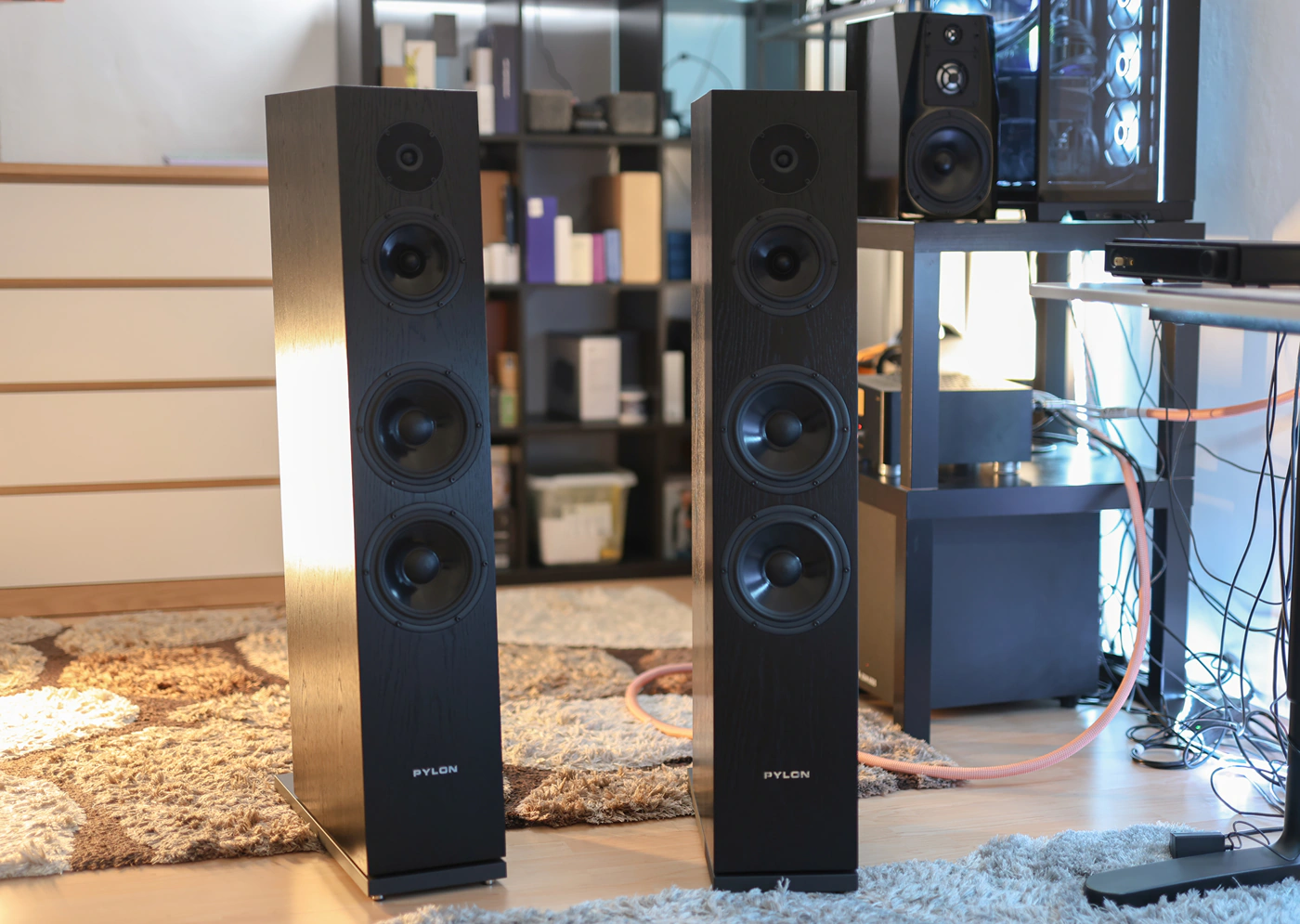
Before the end of today’s written review, we have to add Pylon Audio Diamond 30 MKII to the Audiophile-Heaven Hall Of Fame for their exceptional price / performance ratio, outstanding design, and superb sound. There simply isn’t much else to recommend if you need a pair of tower speakers and if you want the most vivid, detailed and enjoyable sound possible. With a proper amp, you’re going to have a blast every single day you play your favourite tracks on the Diamond30 MKII.
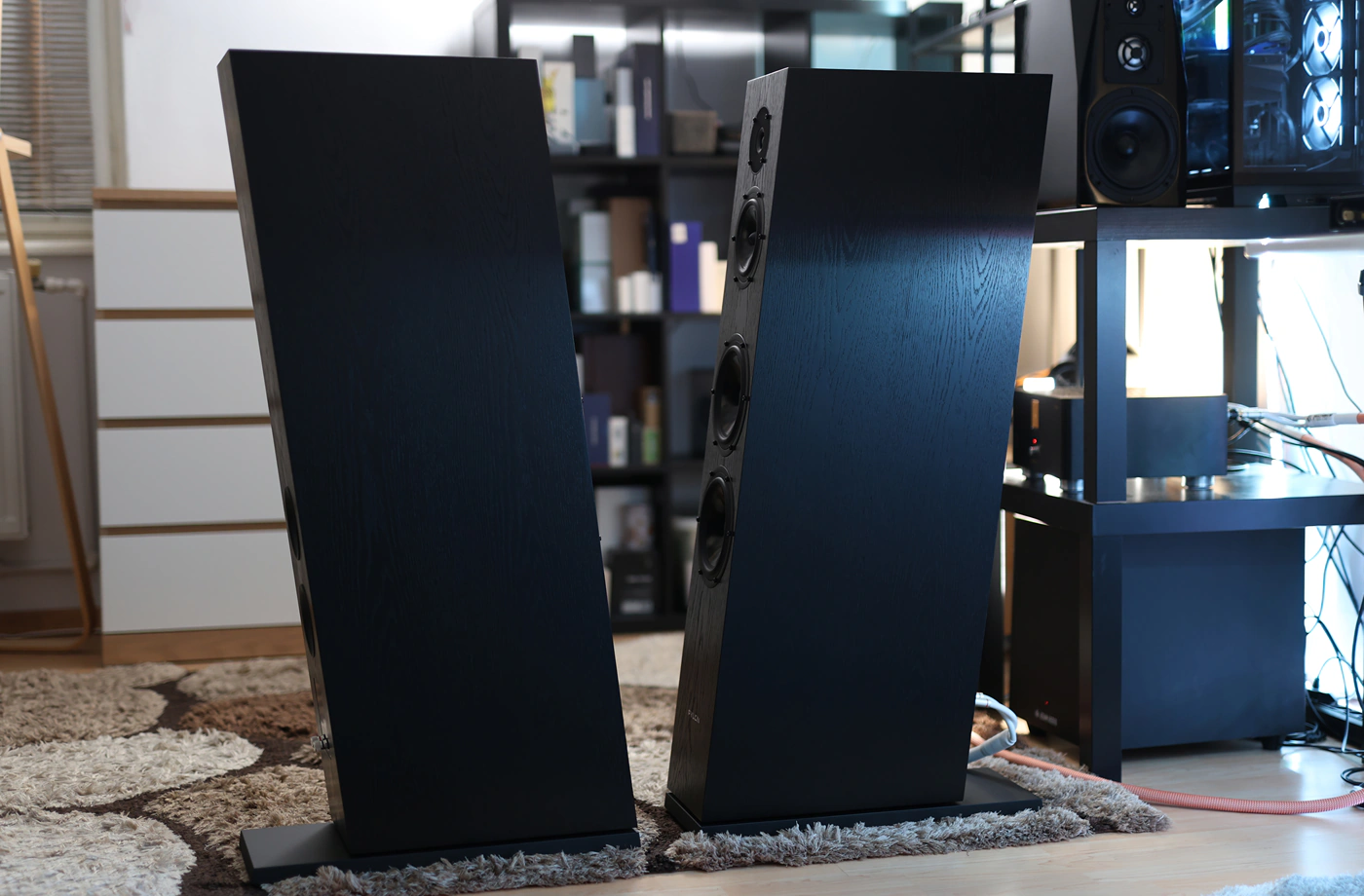
At the end of the day, I hope you had fun reading a longer review, and that you’ve found answers to most questions you may have had about the Pylon Audio Diamond 30 MKII, and that if you decide to order those, they will bring you as much joy and entertainment as they did for me. If you’re looking for an outstanding pair of speakers with a resolution to impress even the pickiest of listeners, easy placement and with reliable build quality, plus a wide, holographic sound with full bass, brilliant treble and dynamic, punchy voicing, then Pylon Audio Diamond 30 MKII will serve you without fail and bring you pure Audiophile Euphoria.
Product Link
Official Link – https://www.pylonaudio.com/diamond-30-mkII-pylon-audio
Amazon – https://amzn.to/3XoQsmK
Technical Specifications
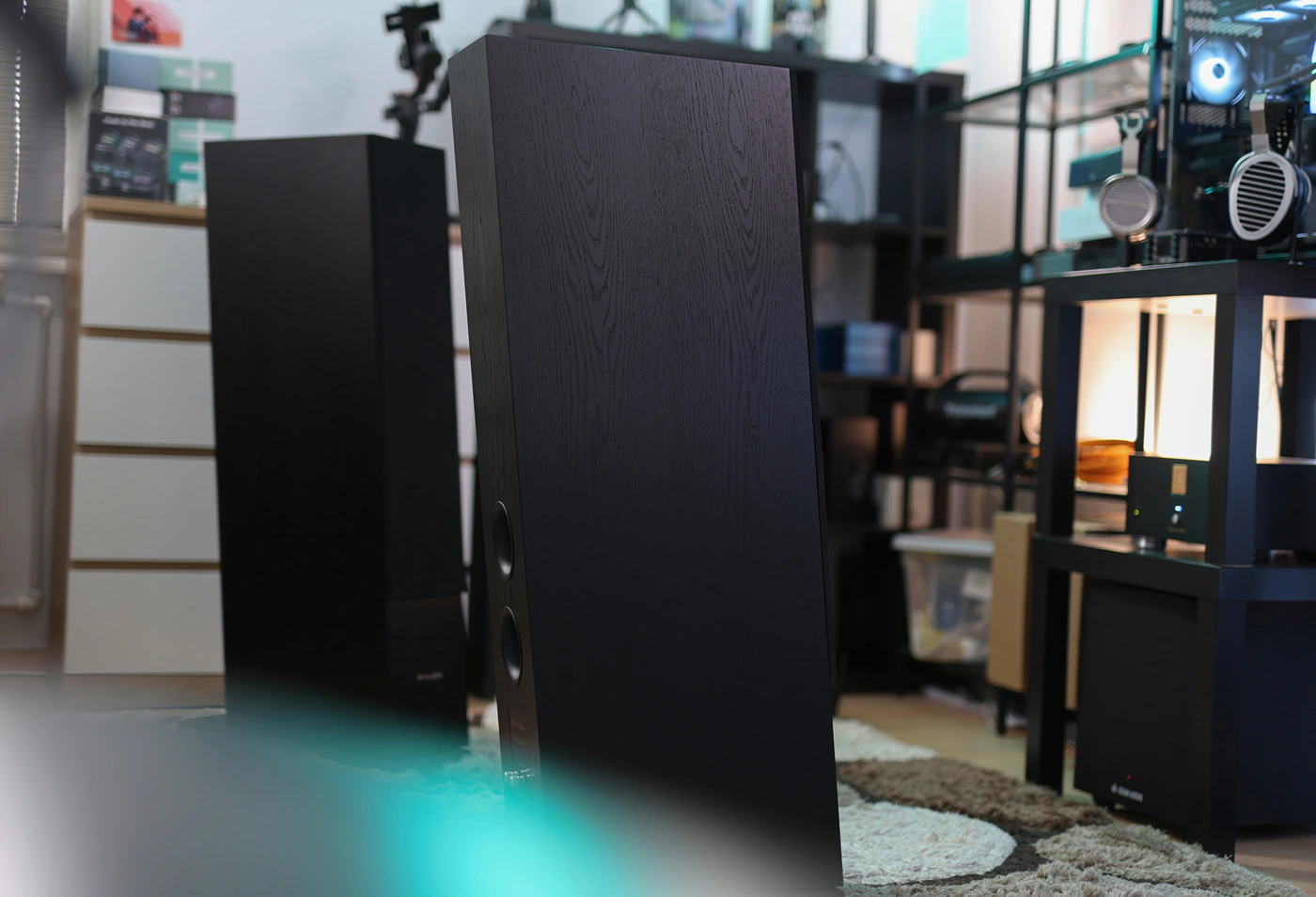
Impedance – 4 Ohm
Bandwidth – 30 Hz – 20 kHz
Nominal power – 130 W
Maximum power – 250 W
Efficiency – 90 dB
Dimensions – [W x H x D] – 196 x 1090 x 525 mm
Weight – 29 kg / piece
Woofer – 2xPylon Audio PSW 18.8.CA/X (2xSeas CA18RNX_CUSTOM)
Midrange speaker – Pylon Audio PSW 15.8.CA/P (1xSeas CA15RLY/P_CUSTOM)
Tweeter – Pylon Audio PST 19.TN (Scan Speak D2010/852100)
Spikes – Yes
Speaker grille – Yes, magnetic
Warranty – 4 years
Available colours
– Natural veneer OAK, ennobled with the oil-wax – 11 decors.
– Natural veneer OAK, colourless lacquer: wenge, black, walnut, cherry, natural.
– High Gloss: white HG, black HG.
– Lacquer Mat – white, black.
--- Please remember to stay safe, and always have fun while listening to music!---
- If you have a dime to spare, please donate, and help us! It would make the day brighter for me and my wife-
Full Playlist used for this review
We listened to more songs than those named in this playlist, but those are excellent for identifying a sonic signature. I recommend trying most of the songs from this playlist, especially if you’re searching for new music! The playlists are different for Spotify, Tidal and Youtube, and based on the songs I enjoy and are available on each!
https://www.youtube.com/playlist?list=PL_cjBXGmwSHSdGcwuc_bKbBDGHL4QvYBu
https://open.spotify.com/playlist/5J3oloz8Riy9LxEGenOjQ0?si=979ba4f082414be7
https://tidal.com/browse/playlist/330fd544-8e5b-4839-bd35-676b2edbb3d5
--- Contact Us ---





